
The green hotels leading the way in ocean regeneration


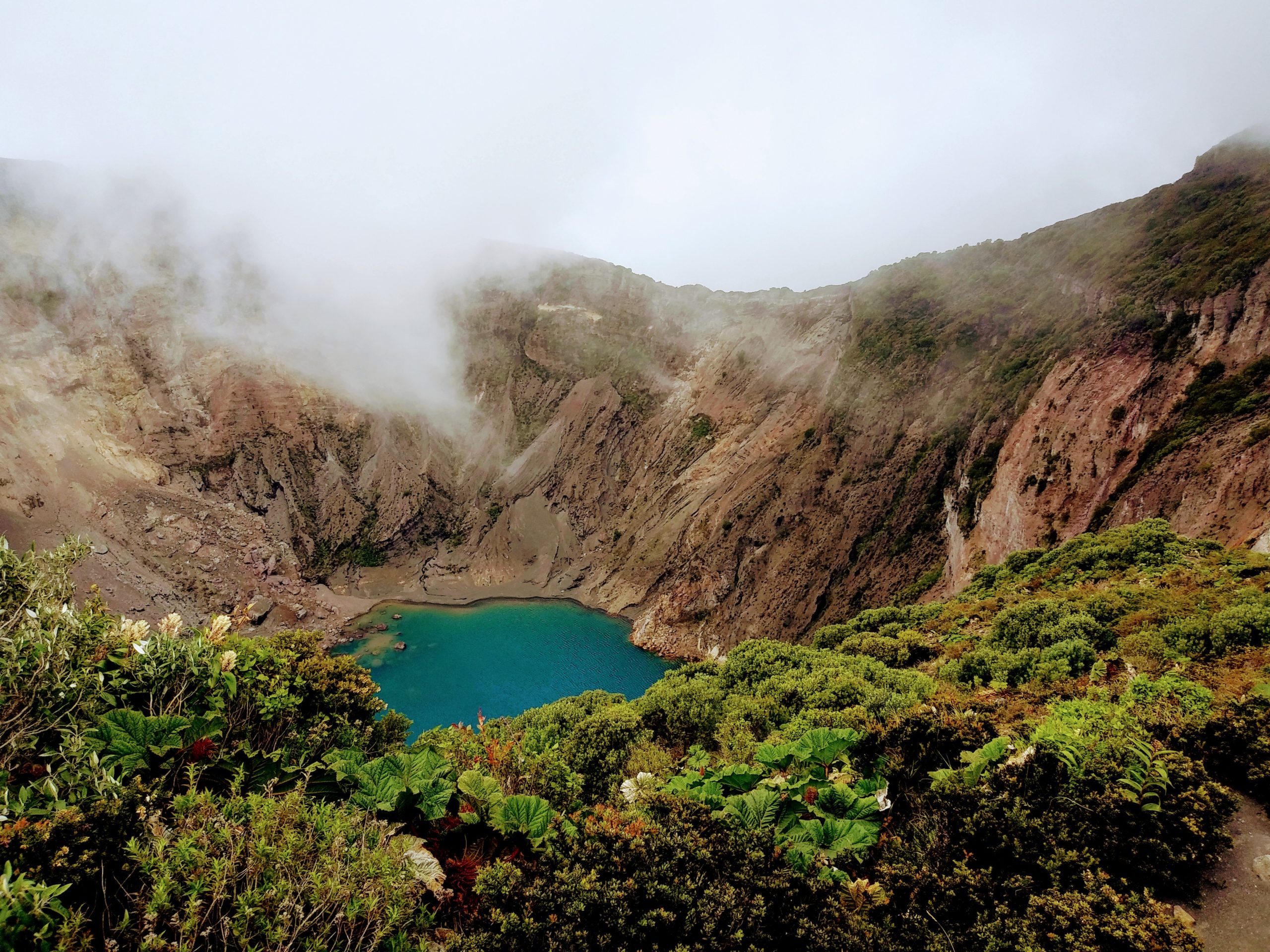
Deforestation rates in the tropics are soaring. According to a report by Frontiers in Environmental Science, ‘the world’s forests, particularly those in tropical areas and climates, are being degraded at an alarming rate. Tropical rainforests contain half of all biodiversity, regulate global climate, purify air and water, and serve as a source of resources for local communities, therefore are incredibly crucial to the health of the planet.’ The loss of biodiversity and species diversity is catastrophic, leading to lowered ecosystem productivity, extinction of species and threat to human life.
But efforts to replant trees and encourage forest recovery are starting to turn the tide. Particularly in certain countries – take Costa Rica as a case study and it should make you realise that with the right ambitions and intentions, we can all, as individuals even, take steps toward a better future.
After suffering some of the highest rates of deforestation in the world in the 1970s and 1980s, Costa Rica has regrown large areas of its tropical rainforest. Between 1940 and 1983, Costa Rica, lost approximately, 50% of its original forests. It’s now the only tropical country to actively stop, and reverse, deforestation. The small country really has set the bar when it comes to climate action and protecting biodiversity.
As an incredibly environmentally progressive country, since 2014, Costa Rica sourced 98% of its energy from renewable sources, has reforested large amounts of degraded land and utilises strong constitutional rights such as the human right to a healthy environment to increase sustainability. Costa Rica also has one of the greatest percentages (26%) of protected land in the world. It’s no surprise then that, in 2019, the country was named Champion of the Earth by the United Nations for its contributions to fighting climate change and protecting nature.

Perhaps most impressive, though, is this way in which it has regenerated lost forests and habitats. As the report by Frontiers continues, ‘Costa Rica successfully reversed deforestation by restoring forest cover from 24.4% in 1985 to >50% by 2011 through implementation of national environmental protection policies in the 1990s that included a portfolio of Pas (Protected Areas), PES (Payments for Ecosystems Services Programs), and ecotourism.’
So, how exactly did they achieve this increase in forestation? In recognising that the situation in Costa Rica was pretty unique, the tourism ministers knew that they could and should target ecotourism as a means to improve and protect their biodiversity.
Although small, the popular tourism destination houses more than 6% of the world’s biodiversity, drawing people in from all corners of the globe to see such a natural phenomenon. Using the four pillars of sustainable tourism (sustainable management, socioeconomic impacts, cultural impacts, and environmental impacts), the government ensure that Costa Rica’s tourist attractions are centered on respecting the environment. Travellers are therefore offered opportunities to reduce their carbon footprint and contribute to sustainable tourism and volunteering programmes – most often directly supporting reforestation. Earlier this year, the Costa Rica National Forest Financing Fund launched a carbon-footprint calculator for tourists to understand the impact of their travels and offset in a way they see fit. Donations and contributions to this program are used to strengthen forest conservation efforts in Costa Rica.

With nearly 50% of Costa Rica’s biodiversity found in the Monteverde Cloud Forest Biological Preserve, it’s a fine example of the aforementioned ecotourism focus coming in to play. Established in 1972 by a coalition of scientists from the Tropical Science Centre (TSC) and Quakers from the local community to protect one of the last tracts of pristine Cloud Forest in Central America, the Preserve is a pioneer and progressive conservation and ecotourism model based in biodiversity research and education.
As a feature by Treehugger quite rightly drew attention to also, ‘an example of sustainable management in the community [is] locally owned Arenal Observatory Lodge [which] maintains 270 acres of natural forest and 400 acres of reforestation areas.’ Many hotels and resorts across the country, like Arenal Observatory Lodge, focus an incredible amount of their attention on reforestation, and have access to a brilliant support system from the Costa Rican Tourism Institute (ICT) and the Certification for Sustainable Tourism, which provides tourism companies with guidelines to manage their business sustainably.
But it isn’t all down to ecotourism, and direct sources of income for locals and farmers have been a large part of the solution. Known as FONAFIFO, a financial mechanism for the recovery and conservation of forest cover, locals are encouraged to restore forests. Although this doesn’t often lead to them making profit, they can then utilise ecotourism (many will charge a fee to guide biologists, ecologists and sustainable tourists around their land) and PES from the government.

As well as the government scheme, non-profits such as Reforest the Tropics has planted 356 hectares of forest since it’s founding on the ground of Costa Rica in 1996 and creates a direct source of income for many struggling farmers. According to Borgen Magazine, they ‘create the equivalent of one full-time position for every 15 hectares planted but also require many more short-term workers during the initial stages of planting. Most of these workers come from the local community.’
Clearly, innovation, pioneering attitudes to economic solutions and moving quickly on sustainability initiatives are central to the success and progression seen in Costa Rica. It’s about experimenting, working together as a community and recognising the need for urgency.
A recent National Geographic article shone a spotlight on how researchers are experimenting and have tested whether coffee pulp could also contribute to bringing Costa Rica’s rainforests back to life. The findings were published in the journal Ecological Solutions and Evidence and showed a dramatic improvement from the coffee over the course of two years. This is a prime example of how experimenting and ploughing resources into sustainability campaigns can yield incredible results over short periods of time. Agricultural by-products are a great place to start when it comes to biodiversity and reforestation, and seemingly Costa Rica is, again, leading the way in its acceptance and enthusiasm to keep trying new things.
Taking that attitude alone is something we could all do in our everyday lives. That is, if we all experimented more with ways to live sustainably and all looked for ways to improve on a daily basis, the world would slowly start looking like a much better place. The Costa Rican philosophy of Pura Vida, meaning Pure Life, is embedded in their culture and manifests in a strong connection between people and nature. As a nation, they are hyper-aware of the effects humans have on the environment and work together to preserve it. Sound like something we could all adopt?
With Costa Rica’s President Carlos Alvarado Quesada at the helm, who recently announced his plans to decarbonise the country by 2050 and called on several world leader’s to join him, few countries can rival the efforts of the small country. Costa Rica continues to be committed to changing the course of our planet, and recently announced their updated, more ambitious Nationally Determined Contribution (NDC). This commits the country to taking actions that would help limit global warming to 1.5 degrees Celsius. It also promises a further reduction in emissions, aiming for a maximum of 9.11 million tonnes of carbon dioxide by 2030.
So, when it comes to trying to live more sustainably, could we all benefit from following in Costa Rica’s footsteps? Keep their enthusiasm, efforts and President Carlos Alvarado Quesada’s progressive attitude in mind, and commit to taking small, yet ambitious, steps everyday.
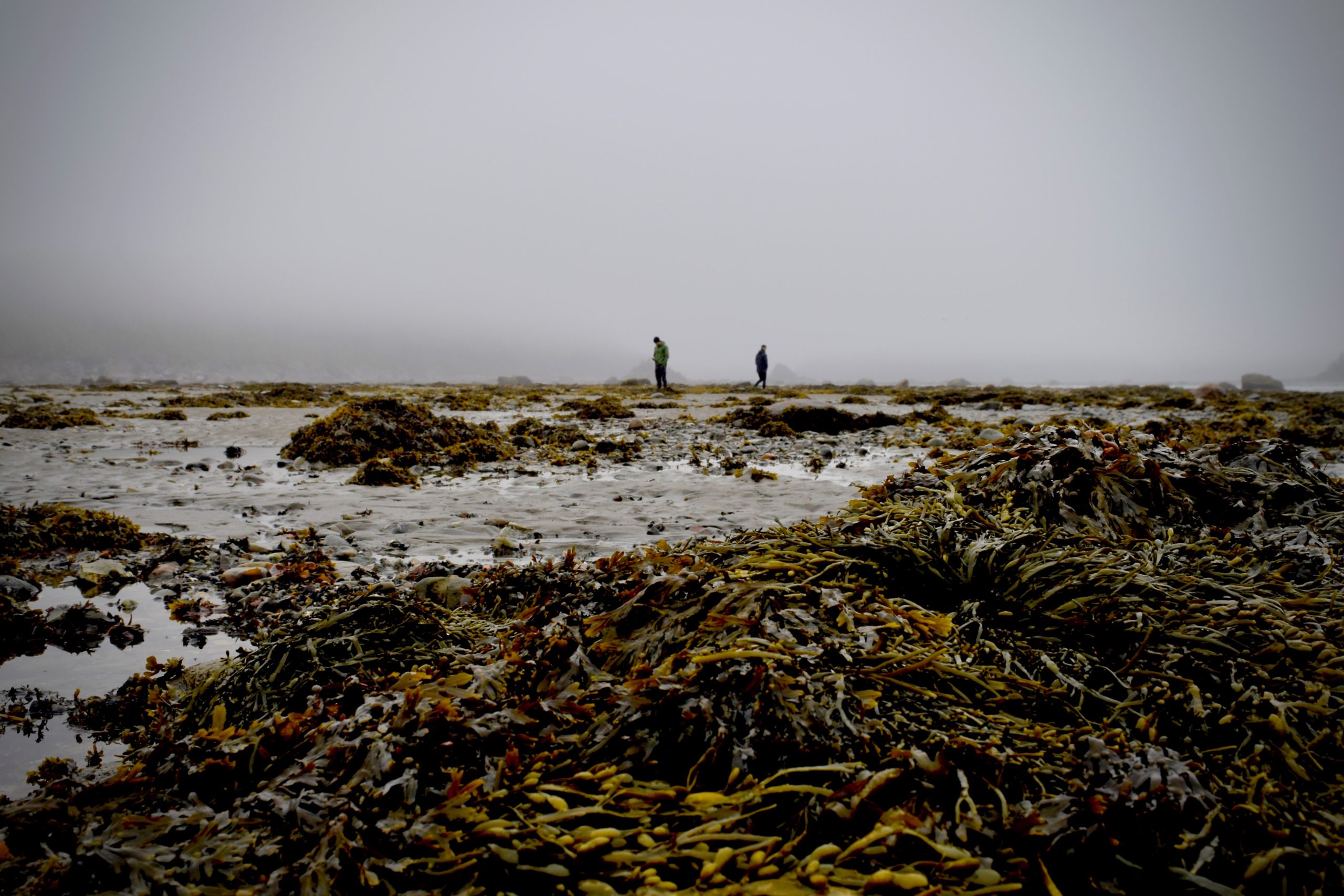
The challenge? Getting the word out there and facilitating the process. You see, seaweed has the ability to combat climate change by regenerating marine ecosystems, absorbing carbon emissions, and creating biofuel and renewable plastics. That’s not to mention it’s power as a renewable food source, too, and the regeneration of local infrastructure and jobs – the sustainable social impacts could be huge.
Given that there are so many concerns over our global consumption of meat and the environmental impact of continuing to eat meat, seaweed could be a significant turning point. It’s a source of protein and packed full of nutrients, so when it comes to eco-friendly, nutrient rich food sources, seaweed could be the one. If seaweed can start being used as and seen to be an everyday and usual food fix, it’ll have hugely positive effects on the outcome of our planet. The seaweed to food movement is massive, and holds giant potential. Not only is it a great protein source and meat substitute, but it’s a way to pioneer the positive effects of eating lower on the food chain.

In fact, a study by Yale University on how ‘third way’ technologies can help to turn the tide on climate change, highlighted that there is ‘one study [that] suggests that if you cover 9 percent of the world’s oceans in seaweed farms, you could draw down the equivalent of all our current emissions – more than 40 gigatons a year – and grow enough protein to feed a population of 10 billion people. That’s a huge opportunity.’
Another study by Yale showed the following: ‘Plants in the ocean, from seagrasses to plankton, add up to just 0.05 percent of the plant biomass on land, but are so pervasive and efficient at sucking up carbon that they cycle through roughly the same amount of carbon every day as all the land-based plants. Yet seagrass ecosystems are being wiped out, thanks to everything from pandemic disease to water pollution and coastal construction projects.’
In an article we featured recently about the humble sibling to seaweed, seagrass, Evie Ramirez highlighted that ‘these productive plants work as filtering systems for coastal waters, helping to keep them clean by soaking up nutrients and bacteria. They also provide coastal defence against rising sea levels and erosion by stabilising sediment and reducing wave and tidal energy.’
But seaweed holds even more power than seagrass. The key difference between the closely related species is that seaweed is a macroalgae, whereby particles will be exported out to sea where the carbon can be sequestered. Unlike seagrass, seaweed doesn’t have roots, so the carbon from macroalgae is stored away from the shore, it’s less likely to be disturbed and returned to the atmosphere. Researchers at Harvard have found that seaweed is, in fact, the most effective natural way of storing carbon emissions away from the atmosphere.

Crucially, seaweed farms also allow important resources for the growing demand for change in the fashion industry. Recently, New York designer Charlotte McCurdy created a seaweed raincoat. Concocting the creation of this in a laboratory, before teaming up with the renowned designer Phillip Lim, Charlotte wanted to plant a seed of hope in the fashion industry and show that, although material development is slow, we can all step in and do our part. Her focus now is on forming an innovation, helping people to recognise that we don’t have time on our side, and utilising the resources that will ultimately become available from seaweed farms across the globe.
But, as this article for Time states, though: ‘For the industry to scale, Druehl says, governing bodies—both national and international—as well as private companies have to make major investments to help the industry get its feet off the ground.’
One such company that is making waves is SeaGrown, situated on the Yorkshire Coast. With support from the Coastal Communities Fund, they are establishing a seaweed farm in the clean, cold, open waters of the North Sea. ‘Our pioneering seaweed farm will ethically produce a sustainable crop which British customers and Industry can use in lots of innovative ways – from biodegradable plastics to a new source of pharmaceuticals, cosmetics, textiles and biochemicals,’ they say. We also produce our own fantastic range of seaweed food seasonings which are a great way of adding serious flavour to all your food with the nutritional boost of SeaGrown seaweed. Most importantly of all, our super-seaweed crop just needs the sun and the sea – no chemicals, fresh water, power or even land.’
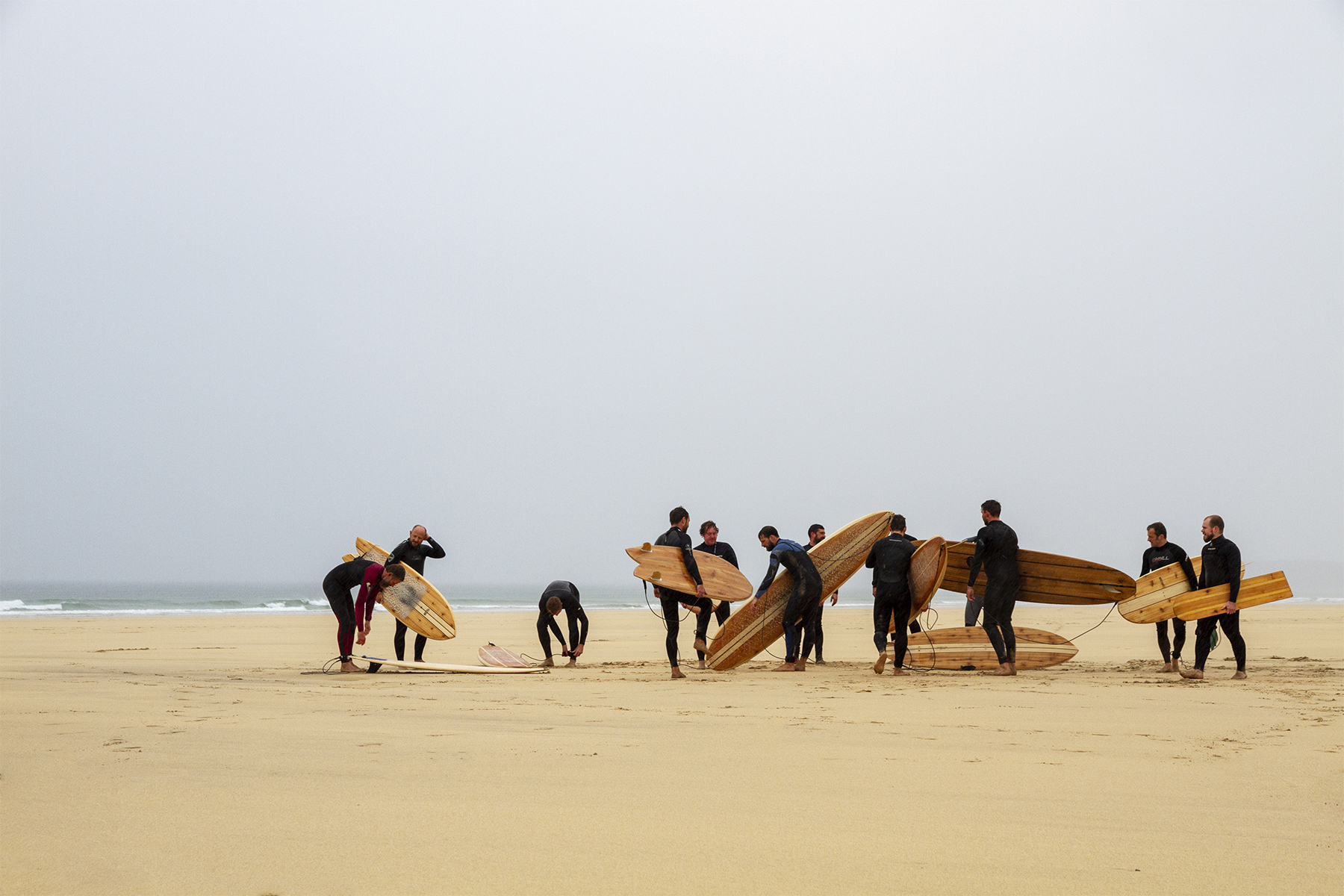
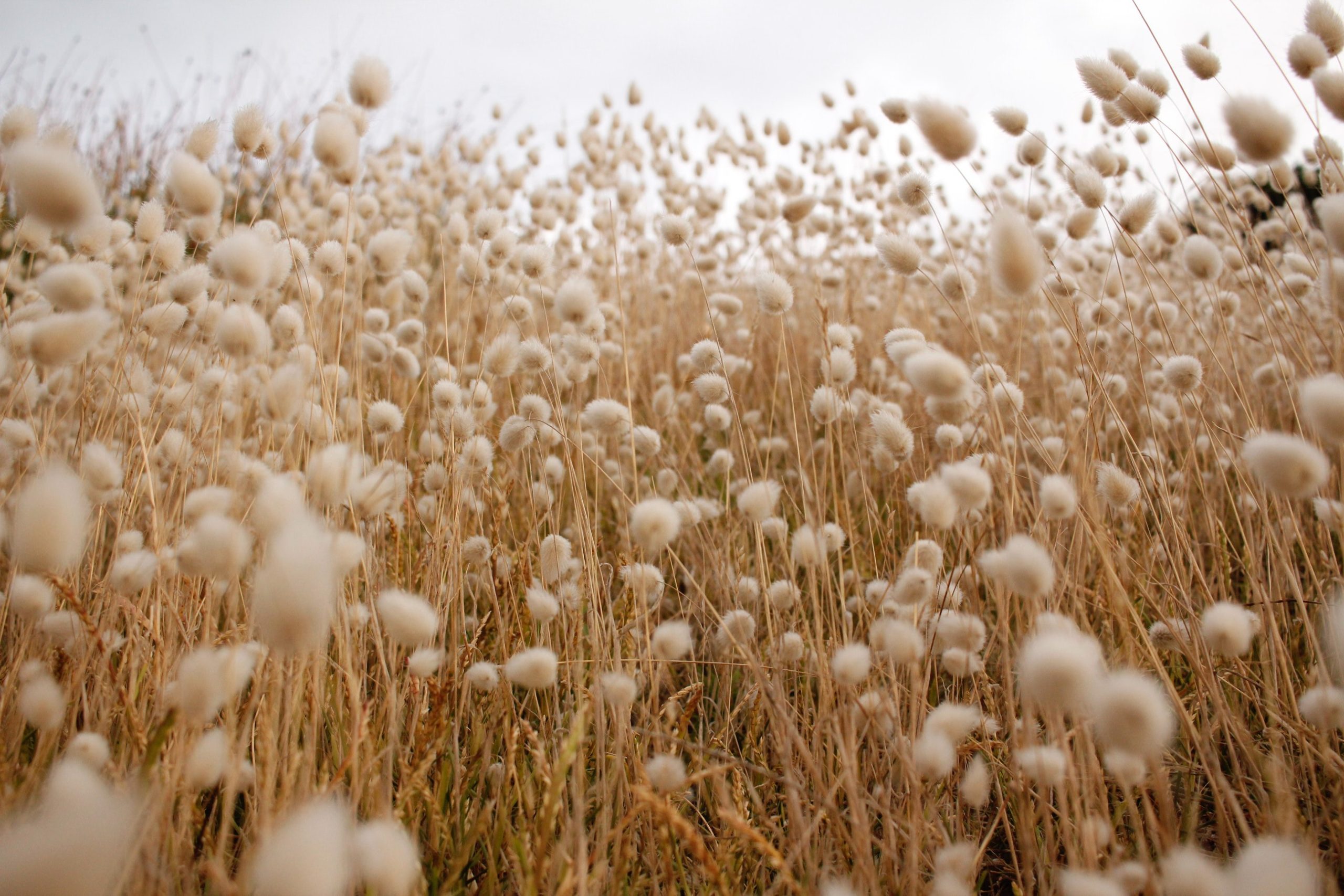
When we consider how to combat a sustainable way forward in fashion, it’s not often the nitty gritty details that spring to mind at first. Fast fashion and throwaway style culture is something that we’re all becoming more aware of (thankfully), and often when you talk to people about being more sustainable with fashion, it’s clear that globally we are focusing on being more conscious and investing in pieces that will last and that are ethically made.
But what does ethically made actually mean? Where are the parameters? And how often do you hear people looking into the specifics of certain everyday, common materials such as cotton? Probably not very often, but that’s where we can certainly direct some more focused attention in the fashion industry.
After all, the textile industry’s environmental problems do mostly relate to the raw materials used in creation: cotton, fossil-based fibres such as polyester, and viscose (the most common man-made cellulosic fibre), and they are all associated with serious environmental concerns. According to the Ellen Macarthur Foundation’s Make Fashion Circular report: ‘If nothing changes, by 2050 the fashion industry will use up a quarter of the world’s carbon budget.’
Statistics on cotton are particularly damning, with the World Wildlife Organisation stating that although the global reach of cotton is one of the widest material reaches, ‘current cotton production methods are environmentally unsustainable—ultimately undermining the industry’s ability to maintain future production.’
In fact, the Better Cotton initiative shows us that ‘less than 25% of cotton is grown in a way that actively protects people and the environment.’ According to the Sustainable Cotton Ranking analysis too, ‘uptake of more sustainable cotton remains relatively low with most of the heavy lifting done by a growing number of leaders.’ Ultimately, in terms of engaging brands and companies on a bigger level in directing consumer attention to ethically produced cotton, although there has been some significant improvement in recent years, there’s still a lot of work to do.
Step in the New Cotton Project, a circular fashion initiative involving 12 pioneering players in the fashion industry. As a world-first, the consortium of brands, manufacturers, suppliers, innovators and research institutes participating in the European Union-funded project will prove that circular, sustainable fashion is not only an ambition, but that it can be achieved today.
The fashion industry produces nearly twice as many clothes today as it did two decades ago and, despite awareness of single-use and throwaway culture rising, demand for clothing is only growing. According to research by the project, the equivalent of one garbage truck of textiles is landfilled or burned every second.
Designed as a means to directly combat this, over a three-year period, the New Cotton Project will ensure that textile waste is collected, sorted and regenerated into Finnish biotechnology group Infinited Fiber Company’s unique, cellulose-based textile fibres. From here, the fibres will be used to create different types of fabrics for clothing.
Crucially, and in a move not seen before, the clothing will be designed, manufactured and sold by global brand Adidas, as well as companies within the H&M Group. At the end-of-use, apparel take-back programmes will collect the clothing to determine the next phase in their lifecycle. Infinited Fibre’s patented technology can regenerate cellulose-rich textile waste into unique fibres that look and feel like cotton. It’s this regeneration and recycling element that is central – and a blueprint for larger brands with huge emphasis to join the movement.
‘We are very excited and proud to lead this project, which is breaking new ground when it comes to making circularity in the textile industry a reality,’ says Infinited Fiber Company’s Co-founder and CEO Petri Alava. ‘The enthusiasm and commitment with which the entire consortium has come together to work towards a cleaner, more sustainable future for fashion is truly inspiring.’
The project is recapturing the valuable, raw materials in discarded clothing and regenerating them back into high-quality fibres that can be spun into new yarn, woven into new fabric, and designed into new clothes – again and again. Perhaps one of the most exciting elements of the movement, the project also aims to act as an inspiration and steppingstone for further, even bigger circular initiatives in the industry going forward. Not to mention make us, as consumers, consider the finer detail in our sustainable treatment of fashion.
Not only can we then focus on purchasing organic and sustainable cotton products, but brands can and will start to get more involved in this also – once they’ve seen the way paved by influential brands. Watch this space.
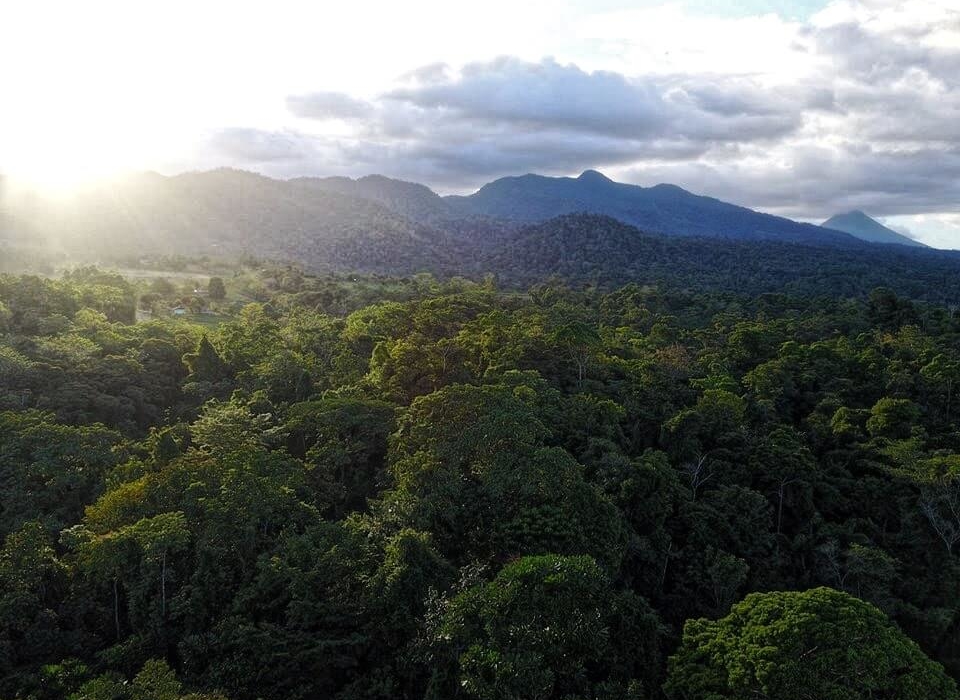
It’s for this reason that the movement is picking up pace – it’s more than necessary for future-proofing our planet. As the Climate Reality Project points out, ‘in addition to a long list of incredible benefits for farmers and their crops, regenerative agriculture practices help us fight the climate crisis by pulling carbon from the atmosphere and sequestering it in the ground.’
But what is regenerative agriculture, exactly? According to Regeneration International, it’s ‘a holistic land management practice that leverages the power of photosynthesis in plants to close the carbon cycle, and build soil health, crop resilience and nutrient density. Regenerative agriculture improves soil health, primarily through the practices that increase soil organic matter. This not only aids in increasing soil biota diversity and health, but increases biodiversity both above and below the soil surface, while increasing both water holding capacity and sequestering carbon at greater depths, thus drawing down climate-damaging levels of atmospheric CO2, and improving soil structure to reverse civilization-threatening human-caused soil loss.’
It’s worth noting that the details are often incredibly complex (especially to anyone who doesn’t know a thing or two about rural practices and the farming industry) and are constantly evolving. It’s picking up momentum, which is brilliant, but it can be hard to pin down what, exactly, it means. The concept is simple though, so let’s start there. Essentially, regenerative agriculture is a farming principle that works to regenerate the soil, place nutrients back and replenish the earth, working with as opposed to working against nature.
These principles and practices include something called over-cropping, whereby you plant to cover soil rather than harvest. Bare soil is bad soil, so regenerative agriculture uses cover crops to maintain living roots in the soil year-round and no gaps. Regenerative farming minimises the use of pesticides or chemical intervention, and seeks to reduce physical disturbance or intervention. It also works to increase diversity through the planting of lots of different plants and crops, so as to rich, varied and nutrient-dense soil.

But how does sustainable farming link to ethical fashion? Agriculture is often only associated with food systems and animals, but it’s important to realise the link between this and fashion, too. Wool production, cotton creation, it’s all a part of the wider farming industry, and the fashion industry and its supply chains are intrinsically connected to soil degradation.
Statistics on cotton are particularly damning, with the World Wildlife Organisation stating that although the global reach of cotton is one of the widest material reaches, ‘current cotton production methods are environmentally unsustainable—ultimately undermining the industry’s ability to maintain future production.’ The concerns we have around sustainable food systems, then, directly apply to the future of fashion as well.
It’s about exploring how we can approach fashion regeneratively alongside the regenerative agriculture push, and thus, raise awareness of this also. Let’s start with Fibreshed. A fibreshed is a regional system, a specific geographical location, that defines and offers boundaries to a natural textile resource base. This allows textiles to be created responsibly, minimising waste and benefitting the environment.
The not-for-profit Fibreshed, which started in 2010 in California, has supported over 30 official Fibreshed communities all over the world. The organisation implements climate beneficial agriculture, rebuilds regional manufacturing, and connects end-users to the source of fiber through direct educational offerings. This ethos looks at ethical fashion production as an entire system, and works towards a soil to soil concept whereby textiles are grown, created, designed, produced, worn and composted locally.
As it stands, sustainable fashion doesn’t often actively give back to the land, but in practices such as this, that could change. Reducing our consumption of fast fashion is great but it’s about making the eco-fashion movement regenerative, too.
Carbon Cycle reports that ‘in 2011, Fibershed prototyped a “150-mile wardrobe” from regionally grown fibers, natural dyes and local labor that generated zero toxic fresh water effluent, reducing the CO2 footprint to one sixth that of conventional garments, and developing a network of over 200 urban designers and rural farmers willing to work together to build a new model for fiber systems.’ Patagonia, too, now works with regenerative organic cotton farms in India to produce clothing that actually does something good, as well as helping to mitigate a bigger problem.
Want to know more about regenerative agricultural practices? You can actually now combine your love for travel, seeing the world and educating yourself with incredible trips and homestays that immerse you within regenerative agriculture. Agritourism is on the up, and as Evie Ramirez points out in a feature she wrote for us last year, ‘is a meaningful and effective way for the hospitality industry to educate and entertain tourists while supporting a wholesome, thriving economy. For visitors, it’s a unique, experiential learning opportunity to understand agriculture. For farmers, it’s a way to supplement income during off-seasons, gain recognition for their agricultural produce and protect their land’s natural resources and amenities.’ Look also for regenerative farming certification: find more info here.
You’ll also find that organisations such as Regenerative Travel have plenty of Farm to Table sustainable escapes on their books, too. Places such as Finca Luna Nueva in Costa Rica offer guests an insight into how regenerative farming can change the outlook of the ecosystem. As Regenerative Travel put it: ‘The essence of Finca Luna Nueva is a shining passion for a regenerative relationship with natural resources. Certified biodynamic, a farm approach of replenishing and feeding into the natural life cycle is key to a harmonious, sacred bond with the land and ecosystem.’

Collect all your food and kitchen scraps to create a nutrient rich meal for your soil.
Opt for planting something such as grazing rye, mustard (fast-growing and can be incorporated into the soil after a few months to boost organic production), winter field beans or peas (great for boosting nitrogen) or buckwheat.
This is a great one for small urban gardens as it’s relatively easy to do when you don’t have a big garden to tend to. For regenerative farming, it’s recommended to pull one crop up and replace it with another on the same day. This decreases soil exposure and increases overall yield potential.
Implement a permanent bed structure whereby you use the same soil season to season, instead of turning it over all the time and releasing carbon into the atmosphere. You can also use leaves or straw as mulch and use a broad fork as a minimally invasive way of loosening the soil.
Think of them as playing a leading role in the diversity of your garden and see them as protectors of your precious plants. Only trim them when they get big enough to annoy you (once or twice a year).
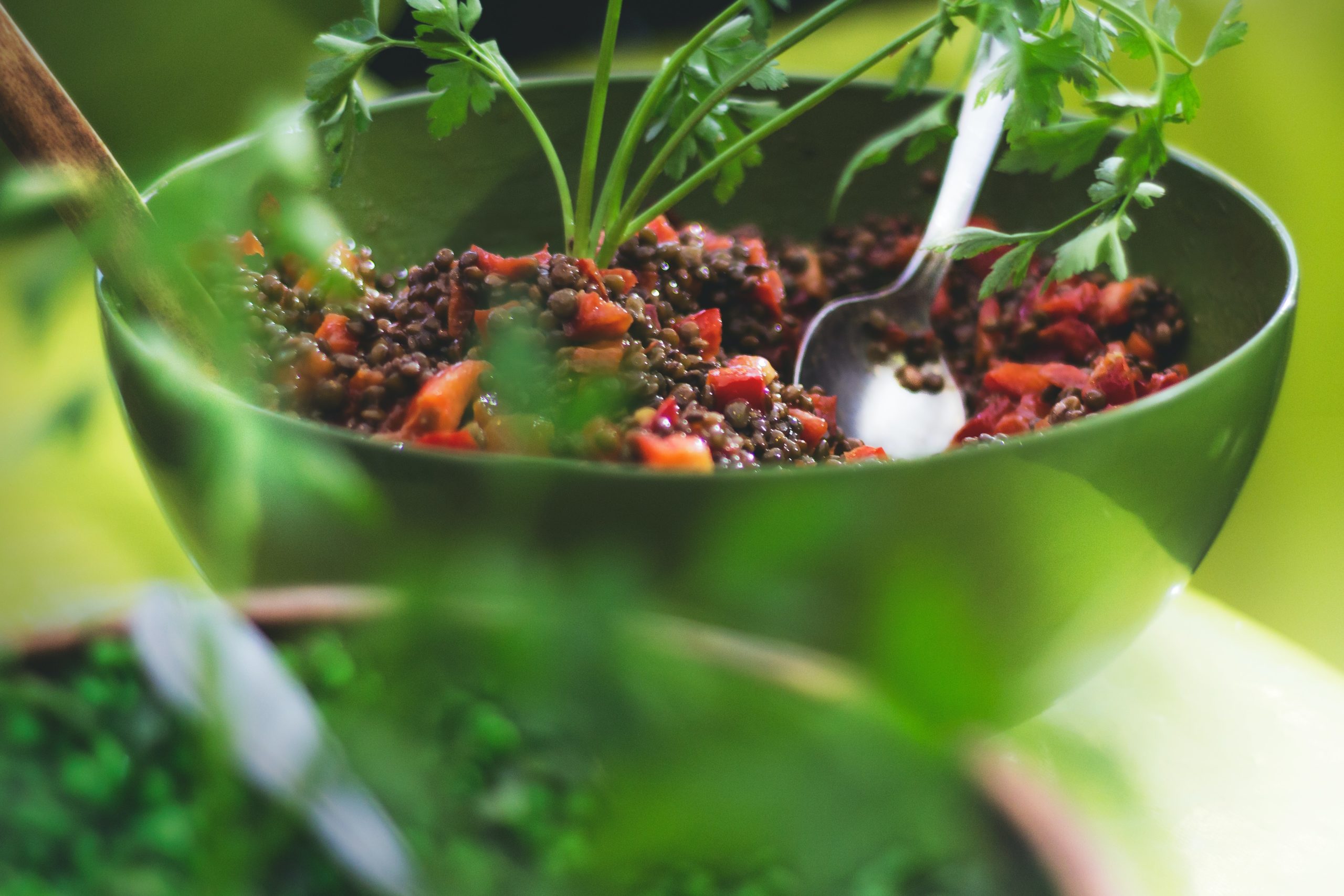

It’s about choice architecture – providing more sustainable options for people to cut down on meat, more opportunity for producers to turn to regenerative techniques and more choice as a whole for an ethical and localised food system. The concept of eating less and better encourages the consumer to really think about where their food is coming from (it’s like the diet equivalent to slow fashion) which, in turn, helps both our health, the food chain and the planet. The Eating Better Alliance is working to stimulate a 50% reduction in meat and dairy consumption in the UK by 2030, and for a transition to ‘better’ meat and dairy as standard.
Reducing meat consumption while buying only from ethically sourced origins and slow farming establishments can also yield incredible results in making the world a more sustainable place for people who don’t want to give up meat. The eating less campaign is about embracing a less and better approach to meat consumption and therefore removing the economic incentive for factory farming through reducing the demand for cheap meat. With a surge in the popularity and growth of regenerative farming, organic meat producers across the globe are starting to get onboard with the campaign.
It’s almost an odd concept, coming from farmers and butchers within the slow food and regenerative agriculture movement, to champion eating less meat, but this is paramount to many of those within the organic food industry. Pipers Farm, a destination for meat that is farmed sustainably and in harmony with nature, ‘believe we should all eat much less meat, and when we do eat meat ensure it has been produced in a way that has respect for the animal, respect for the farmer and respect for the landscape.’

Essentially, the way food is produced is a crucial, if not the most crucial, element in sustainable food systems. The rise in popularity of vegan and plant-based foods means that this is an entity that has been hijacked by mass corporations, too – ultimately, there’s a balance to strike. In a feature for Pipers Farm, the founder of ethical lifestyle community Live Frankly and highly respected investigative writer Lizzie Rivera stated:
‘The tribal lines should not be drawn between vegans, vegetarians or flexitarian. That division predominantly serves to distract us from the most important objective: producing healthier, more nutritious (and better-tasting) food, farmed in tune with nature – and ending the era of industrial farming. Including getting animals out of factory farms […] Intensive animal agriculture and intensively farmed vegan products are not so much polar opposite food systems, but two sides of very similar extractive thinking. If we want to protect the environment and animals, we need to protect our habitats. Whether we’re vegan, veggie or flexi we still need to consider where our food is coming from – who is farming, how and at what cost.’

So, what ingredients should you be packing into your pantry in order to eat less and better? Focus on finding foods that help your meat to go further in order to reduce your need to consume more – generally, you don’t need as much meat as you might think. We dive into the details…
Part of the eating less and better approach is about utilising the whole of the animal – including bones for broth, and the fat for lard and ghee. Fats can go a long way and are an incredibly overlooked and flavoursome base for dishes such as soup and stew.
Pipers Farm stated in their feature on natural ingredients to make your meat go further that ‘good stocks and broths are superb kitchen allies. When made using bones and collagen from slow grown livestock, they are especially loaded with nutrition and flavour, and come with feel-good thrift and satisfaction as they make the most of every scrap of the animal. Whether you embrace the kitchen ritual of making it yourself using our beautiful bones, or go for our equally flavourful and health-benefit-packed pouches, having a batch on standby in the freezer sets you in good stead for the week. Use to cook pasta or grains for a meat-free weekday feed, add to meat juices for punchy sauces and gravies or go classic with simple veg-packed soups and stews.’
Similar to the way in which pulses soak up the flavours of dishes perfectly, whole grains are a brilliant meat substitute to soak up and absorb savoury cooking notes. You can pair them with meat in order to reduce your meat portion, or use them instead.
Mushrooms are a brilliant bulking ingredient and, combined with meat, they can make your meal go much further. They are also a great way of adding flavour to a dish, especially if you are transitioning from a meat-rich diet to a flexi or plant-based one.
As well as being an incredible protein source, pulses are a brilliant way to bulk up dishes and replace meat, or stretch meat further if you’re unwilling to give it up completely.A key aspect of eating less and better is improving the production of plant foods for human consumption. Farmers Collective Hodmedods works directly with British farmers to produce and source a range of pulses and grains, with a commitment to providing wholesome quality food that is more sustainably produced.
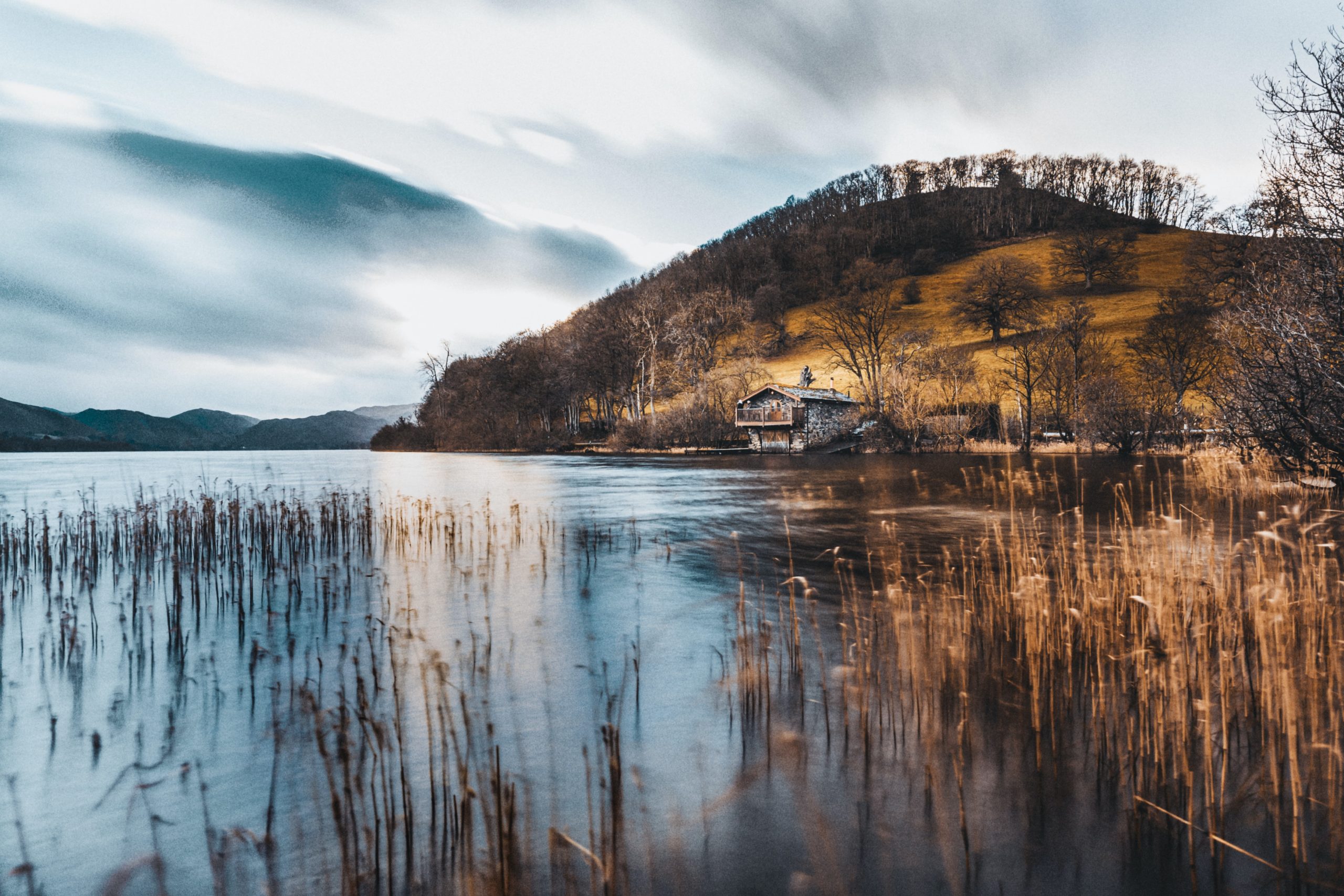
It makes sense that such a wonder of the world would want to protect its beauty, its integrity and the natural formations that make it what it is. But it’s an ambitious wish that they’ve put out to the universe, and one that is admirable in its impactful approach. By 2037, Cumbria and the Lake District aim to become the UK’s first carbon-neutral county, and they are mobilising communities, businesses, and charities to all join the force.
The Zero Carbon Cumbria Partnership includes a wide range of organisations with a key role to play in decarbonising the county at the pace and scale required by climate science, and fundamentally, is supported by the National Lottery. In an interview with The Guardian, Karen Mitchell, the CEO of Cumbria Action for Sustainability (Cafs), said that they are ‘not excluding being able to do it earlier, either. This is a climate emergency and we should be throwing everything at it.’ As it stands, the Lake District is suffering from soil erosion at a dramatic rate and it could look very different in 50 years’ time, due largely to climate change and human actions.
But what does it mean to become a carbon-neutral county, exactly, and what’s in the county’s carbon-neutral plan? Travel is important, and people want to still be able to explore the world, discover new places and play tourist a few times a year. The plan to become a carbon-neutral county supports tourism, recognises its importance but looks to find a way to allow the travel and tourism industry to continue in a more mindful and sustainable manner.
The different initiatives focus on personalised (to the area) and varied approaches to hone in on areas where there is a need to be more green, such as (but not limited to):
Communities and businesses will work together to create low-carbon menus and share good practices, with the potential to develop a Low Carbon Food Charter for Cumbria. An online Low Carbon Food toolkit is being created to help the food sector to share experiences, learn more about the carbon footprint of food and how it can be reduced. The project will also help the public and communities to understand more about low-carbon food and inspire local action.
This project will explore a new model of food growing to increase plant-based food production in Cumbria, reduce food miles by working in partnership with local retailers, and offset carbon usage of local distribution through agroforestry. One aim of this project is to help set up a cooperative bringing together farmers to grow fruit, vegetables and cereal crops to be enjoyed by local people, diversifying farm businesses and generating income.
Funded by the Department of Transport through a £6.9 million initiative, this project aims to change how visitors travel to, from, and around the Lake District, with a particular focus on more sustainable travel methods. Naturally, this kind of set-up will allow other county’s to take inspiration and learn how it is possible to reduce carbon without impacting vital tourism.
With walking such a popular pastime for those visiting the Lake District, Fix the Fells has been put in place to raise awareness of mountain and footpath erosion. This is a brilliant example of a personalised approach.
Working alongside owners of holiday cottages and letting companies, this project aims to reduce carbon emissions and the costs of running traditional cottages.
It’s initiatives such as these that other popular tourist destinations can take inspiration from for their own carbon fighting pioneering – in many ways, it can be seen as an eco-roadmap for more green travelling to follow. Much of the focus on how the Lake District plans to lead the way is put into realistic and reasonable initiatives – ones that can be picked up, worked on immediately and have a clear route to success.
For a popular tourist destination such as the Lake District, becoming carbon-neutral won’t come without its fair share of considerable challenges, after all, the place is visited by around 50 million people per year. This, however, is the pinnacle issue in sustainable travel and tourism, and one that many tourist destinations across the world will face. The focus, therefore, needs to be on allowing people to visit in the most sustainable way possible.
One organisation that is making huge movements is the Lake District National Park Authority who, after 12 months of carbon emission reducing initiatives, are working towards being a carbon net zero operation by 2025. They make up one of the 70 members of the Zero Carbon Cumbria Partnership, who are leading the drive to cut emissions across the county. Some of the many admirable ways they are going about their pledge are through electric vehicles for staff, more home working, and saving on utilities. What’s worth noting, is that these are all manageable day to day steps that many other people could follow suit on.
Inspired to take a trip to the beautiful Lakes this autumn, and support regenerative tourism in the process? We thought you might be, so we’ve put together a little guide below. But remember, go about your journey as mindfully and responsible as possible.
We’ve put together a list of our favourite things & places to stay in the Lakes!

Instead, small-batch natural soap negates this and provides a safe and sustainable solution to a world of synthetics. And people seem to be catching on. In fact, according to a recent study by Global Market Monitor, ‘the natural soaps market will generate record revenue by 2027’.
Old school bar soaps, in particular, have made a massive comeback – trust us, it’s the year of the humble traditional soap! What with Covid-19 and constant hand washing, as well as a real global shift in sustainability attitudes, it’s perhaps not surprising that people are researching ways to reduce waste, care for their skin and hands while staying protected from bacteria, and know that they are doing so in the most natural way as possible.
Plus, there are a lot of perks, outside of sustainability, that makes natural soap a brilliant way forward. One thing is that it is packed full of antioxidants, that will help to rejuvenate your skin, and they contain natural humectants, which draws water to the outer layer of your skin. When it comes to going au natural with your soap, there are certain ingredients you could look out for. If you’ve got dry and chapped skin, for example, and you always struggle to maintain moisture, keep your eyes peeled for super moisturising ingredients with anti-inflammatory properties such as shea butter, honey, aloe vera, and avocado. Make sure you steer clear of fragranced products and opt for non-fragrant plant oils such as argan oil or borage seed oil.
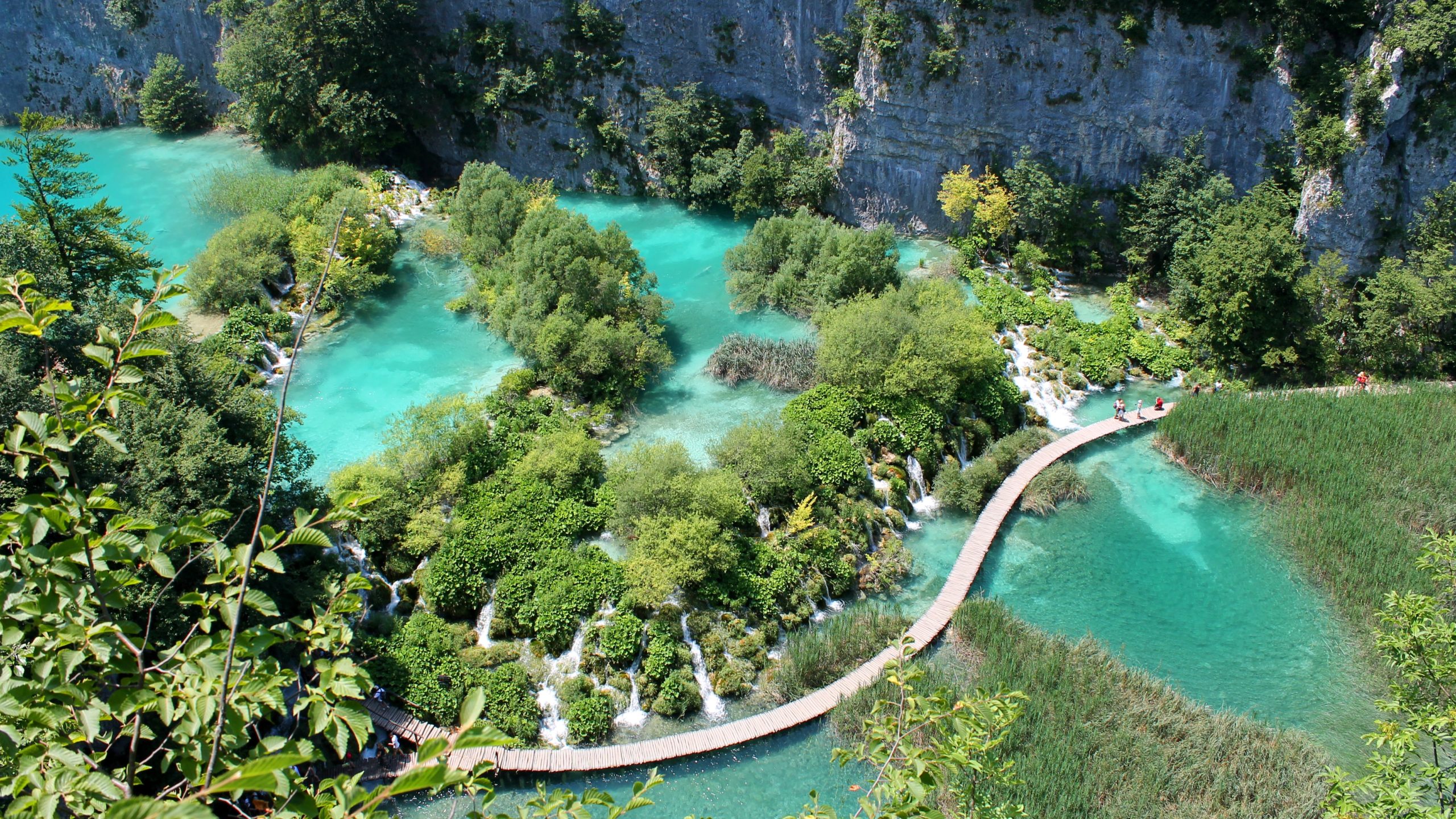
A recent report by global market research company Euromonitor International has ranked the top 30 sustainable countries in the world, based on the analysis of 99 countries, taking into account environmental, social and economic sustainability, as well as the demand for sustainable tourism.
Not only this, but the report also highlights that that over 2/3 of global consumers actively seek to and want to have a positive impact on the environment through their daily actions in 2021. This, combined with the increase in searches for regenerative travel and slow travel, is incredibly uplifting news.
European countries dominate the list, with Sweden coming out on top due to its engagement with sustainability and incredible progress toward sustainable travel. Finland, Austria, Estonia and Norway (in that order) followed close behind Sweden, and are leading the charge when it comes to green holiday destinations. What’s great to see is that there is a clear change in mind-set to resist returning to a volume-driven travel and tourism model. Instead, stakeholders are rallying together to ‘build back better’ through value creation from sustainable tourism.

While this is brilliant news for our health, it’s alarming news for our environment. As Sustainable Travel pointed out in a recent feature: ‘It is estimated that 14,000 tons of sunscreen end up in the oceans each year. And this is not only from those of us who like to swim in the sea. The sunscreen that you rinse down the drain when you shower can eventually find its way into the ocean. In addition, the convenient aerosol sprays can spread sunscreen particles across the sand. When the tide comes in, these chemicals can get washed out to sea.’
But how exactly does it harm the environment and our oceans in particular? After decades of research, the Ocean Foundation has found that ‘just a small amount of certain chemicals is enough to cause corals to bleach, losing their symbiotic algal energy source and become more susceptible to viral infections.’ These certain chemicals are namely the synthetic molecule, oxybenzone, octinoxate, and phenoxyethanol, which was originally used as a mass fish anaesthetic. All three ingredients are also potentially harmful and linked to potential health conditions in humans.
According to a report underway (expected to be complete this year) by the National Ocean Service, there are specific ways in which these chemicals can harm different aspects of marine life:
Green Algae: Can impair growth and photosynthesis.
Coral: Accumulates in tissues. Can induce bleaching, damage DNA, deform young, and even kill.
Mussels: Can induce defects in young.
Sea Urchins: Can damage immune and reproductive systems, and deform young.
Fish: Can decrease fertility and reproduction, and cause female characteristics in male fish.
Dolphins: Can accumulate in tissue and be transferred to young.
Some countries are already making waves in the fight against damaging chemicals in sunscreen, though, and Hawaii has become the first to pass a bill banning sunscreens containing octinoxate from its shores (coming into effect this year). This is a direct attempt to put a halt to the widespread coral bleaching events happening across our oceans, and other countries are now starting to follow suit.
Of course, it’s not just about being reef-friendly and environmentally aware, though. It’s crucially important that your sunscreen protects your skin and nourishes it at the same time. Gone are the days where we plaster our bodies in oil and clog up our pores with chemicals that undo the good work of the sun barrier itself. Instead, it’s about finding a sunscreen that works for your skin, replenishes it and protects it, while also protecting and nurturing our beautiful world. Mineral sunscreens are both environmental and protect our skin, reflecting the sun’s rays away from the surface of the skin like a mirror.

It’s been well documented over the last decade that diamonds (as well as gold and other popular jewellery products), are in fact, definitely not our best friends – despite the overused statement attempting to tell us differently.
Over the last few centuries, even up to today’s world, it’s rare that people understand the origins of their gemstones. Passing through the hands of multiple dealers, merchants and countries, it’s an industry that has always been known for being impervious and murky. With so much of the production reliant upon natural products and mining for materials, the environmental impact is treacherous.
Of course, it is not only problematic when it comes to the environment. Unfortunately, the jewellery industry, and diamonds in particular, has been linked to corruption and unethical behaviour for centuries. In fact, according to a report by the Yale School of the Environment, ‘it’s estimated that at least 60% of mined diamonds sold in the U.S have problematic ties to military governments and corruption.’
Transparent and ethical sourcing, as well as low energy usage and using sustainable materials, is all at the centre of a sustainable and environmentally friendly jewellery industry. Sustainability, in its truest form, needs to be approached holistically, as well as with the product. Similarly, while people’s habits don’t change and the population continues to want things that are ultimately bad for the environment, little change is going to happen.
There has, however, over the last two years, been a turning point in the approach to jewellery consumption and creation. At the centre of this positive progression is the fact that so many creative players are campaigning for change and development. Innovation and pioneering attempts at disrupting and catapulting the industry forwards have completely transformed the sustainable outlook of the future.
One such company that’s truly pushing boundaries is actively changing the shape of the future. Say hello to Aether, the world’s first carbon-negative and truly sustainable diamonds: alchemized from air and handset in fair-mined gold. Founded by climate-change campaigner and mechanical engineer Ryan Shearman, Aether is a luxury jewelry company with a paradigm-shifting vision. The jewellery pushes the boundaries of design, technology, and craftsmanship in order to pave the way for a more beautiful, honest, and enduring world.
Made from air, the diamonds created by the company are certified by the International Gemological Institute and are held to the same standards as mined diamonds. Naturally, due to their world-first status, the Aether stones are the most rare you can buy and, as it stands, their quality is among the top 2% of all diamonds on the planet.
What’s pertinent, too, is the notion that they have created something that can affect change for good, but without people having to change their habits. Instead, the company is creating an altogether new solution. They’ve recognised that people will still buy jewellery, and have created something that positively impacts through the production techniques.
It’s true that there are other big companies making brilliant moves in the lab-grown jewellery world, but other lab-grown diamond brands still source their carbon from fossil fuels. With a lack of transparency in the lab-grown industry, and blatant green washing happening every day, it’s generally pretty hard for a consumer to see through the marketing messages and ‘facts’.
That’s where Aether has really changed the story (and, the happy ending). They are proudly aboveground, meaning nothing is drilled or dug, and nothing harms the planet. ‘Amid global climate change and all of the other challenges 2020 has brought with it, we believe there is currently great opportunity for high-minded doers to step in and help shape the future,’ says Ryan. ‘Now more than ever, forces for true and lasting change are coalescing to transform our world into one where massive positive advancements for humanity and the planet are truly possible.’
After years and years of research, invention and blood, sweat and tears, the company came up with the protected technology to alchemize diamonds from air pollution. So, how does it work, exactly? In simple terms, the process happens across four stages.
Firstly, atmospheric collectors pull carbon dioxide air pollution straight out of the sky. As the air is drawn in, the CO2 collects in specialized filters. This captured CO2 is then synthesized into a usable hydrocarbon raw material, perfect for growing diamonds. From here, the hydrocarbon raw materials are placed into powerful reactors that create the perfect environment for growing a diamond. The diamonds grow fractal by fractal as the carbon atoms align into crystalline form. Aether sends the rough diamonds to cutters and polishers who help the diamonds achieve peak perfection.

Amazingly, each carat removes approximately 20 tonnes of carbon out of the sky. When you consider that the average person in the UK has an annual carbon footprint of 12.7 tonnes and in the US, 16 tonnes, buying a 2-carat diamond offsets a huge amount of carbon.
It’s exactly this type of change that young consumers want to see. In fact, according to a recent article by Matter of Form: ‘Ethical transparency around jewellery production is critical now, especially among millennials, who favour products and businesses that have a conscience. The 4 Cs will no longer cut it –– millennials want to be assured that what they are buying has not had a negative impact on humans or the environment. The provenance of the stone is key.’
Aether is proud to be a part of this idea of change for good. ‘Creating the world’s first positive-impact diamonds is just the beginning, and we are committed to becoming an independently carbon-negative company by 2023,’ Ryan continues.
‘We’re actively building a future where we generate our own renewable energy sources, returning excess clean power to the grid. Until then, offsets neutralize our operational impact as a whole, and help shift the industry from old power to new.’
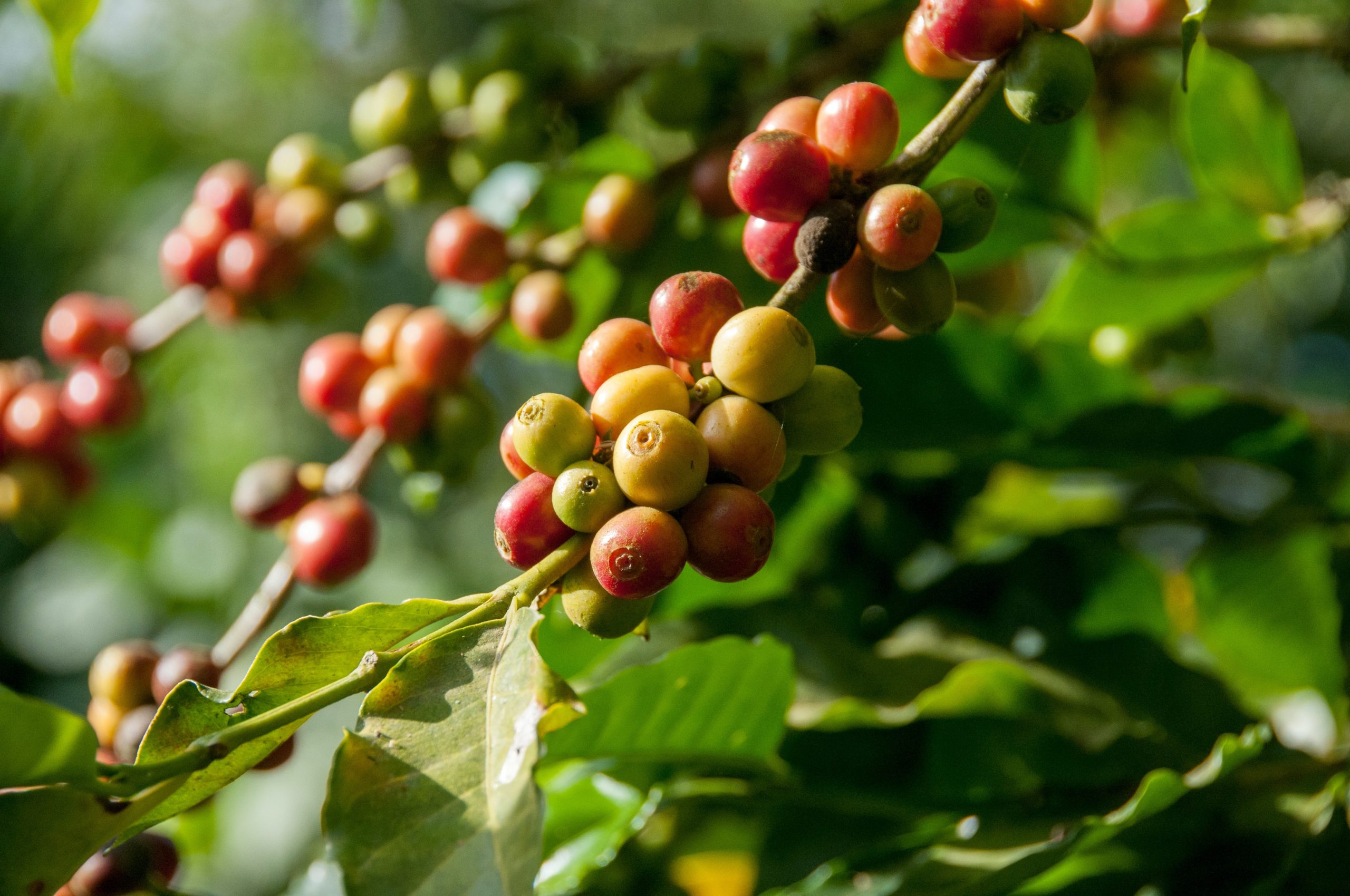
In a recent report by The Conversation, scientists from UCL found that ‘the average cup of coffee contains about 18g of green coffee, so 1 kg of it can make 56 espressos. Just one espresso has an average carbon footprint of about 0.28 kg, but it could be as little as 0.06 kg if grown sustainably.’ Essentially, while the caffeine hit might wear off, the environmental and ethical impact can linger on.
The coffee industry is full of complex challenges, with climate change one of the huge ones, but also community dynamics, as well as the socioeconomic/political conditions to be aware of in many coffee-growing countries.
According to a report by Sustain Coffee, ‘The coffee industry will need to produce between 4 million and 14 million additional tons of coffee per year to meet demand by 2050. Unless growers can significantly increase coffee productivity per hectare, the industry will need to double the area under coffee production by 2050. During this same period, climate change is predicted to create conditions where half of the land currently suitable for growing coffee becomes unsuitable.’
The challenge, then, for organisations such as Sustain Coffee and for coffee brands all over the world will be to achieve, over the next 35 years, zero net deforestation while satisfying increasing demand from coffee consumers. It’s imperative, therefore, that consumers are aware of the elements that go into creating a sustainable coffee consumption scenario.
The Fairtrade stamp or other environmental certification doesn’t necessarily mean the coffee you are drinking is sustainable, and it can be a bit of a minefield to know whether the everyday choices you are making are ethical. This is where companies such as Kiss the Hippo want to change the narrative – they want your daily coffee experience to be the best it can be without having a harmful impact on the environment or the people and communities producing the coffee.
They are taking the hard work out of it for the consumer, but in terms of understanding, what actually goes into creating a sustainable coffee brand, and what does it mean to be ethical in the current caffeine market?
We sat down with Maya Zara, the creative director of the brand that is disrupting the way we consider coffee (both ethically and stylistically) to discover how they became a carbon negative company and champion sustainable practices.
Known for their innovative and sustainable approach to coffee, independent coffee roasters Kiss the Hippo have recently, after expanding their existing partnership with Swiss non-profit organisation On A Mission, become a totally carbon negative company. What’s more, all of Kiss the Hippo’s coffees, coffee pods and coffee products are now carbon negative, too.
Born in 2018, the brand wanted to create the ultimate coffee experience and find a way to marry together sustainable practises with quality. They started by focusing on their shops, making them a place where people would want to enjoy coffee and aiming to deliver the best of the best while doing so in a sustainable way. ‘Our founder wanted to find beautiful coffee experiences, but usually in the UK, it’s a bit separated,’ explains Maya.
‘You might get amazing coffee, but sometimes the consistency isn’t always there. We wanted to create a space where everything came together. Care is at the core – we care about sourcing, working directly with the farmers and charity partners, and we care about our organic roasting, the taste, and also the experience. Then, it’s about caring for and not harming the planet.’
But when it comes to sustainability, essentially, as a consumer, the system means that we largely rely on the brand and shop who, in turn rely on their suppliers and importers, to know exactly what it is that we are buying. Transparency and trust is a key element to moving forward sustainably, and this is something that has always been important to Kiss the Hippo.
‘Sustainability has always been at the core, and then the taste and the design had to come together too to create that overall experience,’ says Maya. ‘In the very early days, even in setting up the roasteries, sustainability was always a big part of the ethos – we didn’t just want to be another coffee shop. We didn’t see any other option with the world going in the direction it’s going. Overall, it was always about taste and how do we create that in a sustainable way.’

Of course, when it comes to their eco credentials, all of the brands cups and products are compostable. The brand also turns their waste espresso into biofuel. But it’s about going that extra mile, too. Due to the unpredictable nature of coffee production, growing communities are often left without the guarantee of prices needed to cover their production costs. It leads to extreme poverty and socio-economic collapse.
‘Our coffee teams go around the sourcing countries to ensure we are sourcing ethically,’ says Maya. ‘We visit the farms and make sure their ways and methods are sustainable and ethical. We also have a commitment to paying 50% above the Fairtrade price, so that the farmers don’t just shoulder the heaviest weight.’
Even the roaster itself plays a big part in the journey toward sustainability. For Kiss the Hippo, this was an important element to get right. To ensure they had the most eco-friendly solution that didn’t compromise on roasting taste and quality, they turned to the Loring Smart Roast System.
The closed system design means that changes in the weather and humidity make no difference to what is happening in the roasting chamber, offering the skilled roaster the opportunity to really concentrate on the important thing; the roast profile. The Loring is also extremely efficient, using up to 80% less fuel than a traditional drum roaster, offering the very best performance in terms of environmental impact and controllability.
But, how did they go about becoming carbon negative? Maya tells me that the process of conquering the carbon was one of the first key objectives for Kiss the Hippo. Becoming carbon negative was an important step in pioneering real change, which they hope will, in turn, encourage bigger organisations to make similar positive changes in their wake.
In terms of how they did it, Kiss the Hippo achieved this important step by, firstly, reducing their emissions and, secondly, by calculating their carbon footprint by looking at their core products, packaging and transport. Finally, they started working with On A Mission to offset their CO2 value by contributing to reforestation efforts all over the planet.
‘It’s always been our long-term goal but it’s quite a lengthy process,’ says Maya. ‘We started doing all of our calculations and then we managed to hit our long-term aim last month – which is an amazing feeling. Our consumers don’t have to worry about the process that goes behind what they are consuming, but they can feel good about it, knowing it’s coming from us.’
All of their coffee is high grade and sustainably sourced, their workshop is powered with solar panels and the farm uses biomass boilers to heat its water. They also use the waste product from roasting coffee (chaff) as fuel for the biomass boiler, which means there are no transportation emissions. Plus, they use a carbon neutral courier service, too!
This UK-based brand strive to deliver greatness to every cup, bringing you ethical coffee that tastes amazing and transforms lives. They give 10% of our retail profits back to farmers, and support industry-led schemes to improve the lives of coffee producers and their families.
Their mission is clear: create a sustainable future for indigenous communities, the rainforest and the coffee industry. Working closely with remote Indigenous Communities, Easy Jose help them grow incredible specialty coffee, in harmony with the forests they live in.
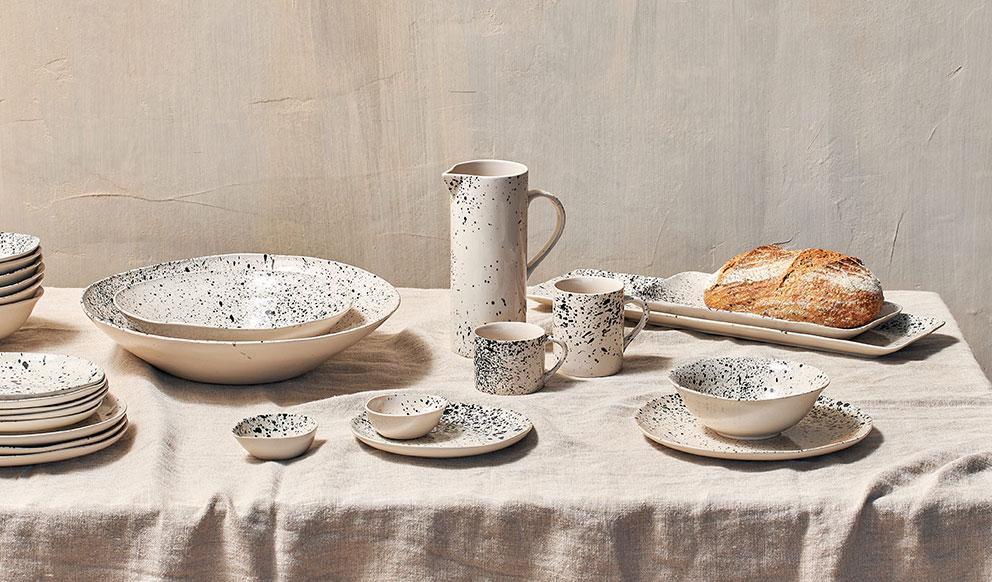
There’s something very tactile and rewarding about a beautifully handcrafted and ethically produced artefact, one that can continue its story and rich life within the four walls of your home. But, convincing consumers to invest in sustainably made homewares is no mean feat – cheap and fast turnaround outlets make it easy and convenient to shop throwaway products.
Fortunately, it seems that people are starting to think about the true impact of their shopping habits more and more at the moment though. While the homewares e-commerce sphere has been dramatically boosted throughout the last year, green consumerism has also taken centre stage. In fact, increasing demand for eco-friendly buildings across the globe is generating demand for eco-friendly furniture too and, according to a recent report globally we are seeing a ‘rising prominence towards sustainability as a prevalent trend in home design.’
This is a brilliant development, particularly considering the fact that the fast-moving interiors market has been falling behind in sustainability progression. Poorly made homewares products cause a huge amount of landfill waste year on year, so pivoting to focus on ethically produced and well made (with longevity in mind) pieces is a great step forward.
So, where are the best places to source such pieces? Here are some of the most inspiring and beautiful homeware brands out there right now.
Based in Bristol, a city known for its eco ways and proud ethically minded movements, Konk Furniture is a solid start for anyone looking at refurnishing their home in an environmentally friendly manner. Architecture graduate Alex Ratcliffe, who had a passion for making things that last, founded the multidisciplinary design studio and workshop.
So I might be marginally biased, as a Bristol-dweller myself, but it’s clear that Alex set out with a grounded and inspiring want to better the options out there for sustainable furniture and what he’s created is pretty incredible. Now, you’ll find the pieces gracing the pages of some of the best design and interiors magazines and recommended by institutions such as Dezeen.
Only using timber from approved sustainable forests, as a company they have evolved with Alex’s ethos and vision and don’t believe in a throwaway culture. Their furniture is made for life – it’s solid, hardwearing and ages with character. What’s more, every single piece is made-to-order to ensure that absolutely nothing goes to waste too. They also work in partnership with One Tree Planted, and donate to plant a tree for every single order they receive.

The Dharma Door is an incredible brand on a mission to make a difference through design. By working with fair trade artisans around the world, they create stunning natural homewares and accessories and support communities in need. From stunning wall hangings to smart storage baskets, each item is made by hand – from start to finish – amongst the bustle of rural village life.
Rooted in real people’s stories, the brand was founded by Shannon Sheedy after spending a year travelling in India and Nepal and witnessing the plight of Tibetan refugees. Today, the brand seeks out the highest grade of natural fibres available and pairs them with artisan skills found in various regions to create original, quality pieces that are a joy to live with.
This stunning brand had to make the list. Aerende is an online store showcasing ethically produced items for your home, whereby people facing social challenges and whom struggle to access conventional employment make each limited edition item.
Emily Mathieson, a former travel editor for The Guardian, Condé Nast Traveller and Red, founded the non-profit organisation in 2016. It’s perhaps not surprising it’s as beautiful a brand as it is, with Emily’s influences from the amazing places she’s travelled clear to see. Having questioned the lack of high-quality homewares options in the ethical interiors sector, Emily made it her mission to create a model for considerate, socially valuable shopping that doesn’t compromise on quality or style.
Passionate about the ways in which consumers have the power to change the future of e-commerce and create an impact in social change, the brand epitomises the true meaning of sustainability. Quite beautifully, Aerende means ‘care’ in Olde English and was consciously chosen to reflect their commitments to heritage skills, as well as their considerate business practices too.
This is one of those brands that just ooze a sense of sustainability through each of its stunning and tactile fibres. Luks Linen homewares products are ethically made and hand loomed by master weavers in Turkey and their collection of textiles are made to be long lasting and incredibly versatile.
Crucial to the ethical ethos of the brand and the fact they advocate for ethical production, each beautiful piece is sustainably made and sourced. Luks Linen is proud to partner with local family run ateliers who use locally grown cotton which is spun, dyed and woven in the area in which it was cultivated, cutting down on transportation and the carbon footprint.
As well as minimising their carbon footprint by bulk ordering from our ateliers, they also chose to be an e-commerce platform in order to reduce the use of paper by generating invoices and managing returns online. Their packaging is made from recycled and recyclable materials too and all of the fabrics and materials used in the Luks ranges are locally grown, spun, dyed and woven.

Perhaps one of the most well known environmentally friendly and ethical home brands in the UK, Nkuku deserves a place on the list. Based in Devon, the brand works with natural and recycled materials through sustainable methods of production and creates products that enhance our lifestyles while championing a sustainable forward movement.
Nkuku works with artisans throughout the world, supporting and celebrating their skills by bringing their products to a wider audience across the globe. Adhering to the standard globally recognised 10 Principles Of Fair Trade, they ensure they gather the waste leftover from other industries including cotton from discarded t-shirts, leather, metals and glass as well as recycled saris too.

Somehow cider maker and flooring specialists, Tasha and Barney Green, stumbled upon an idea to leave their jobs and set up Weaver Green, a company making recycled plastic rugs and textiles from discarded plastic bottles.
So, how did it all come about, and why was sustainability so important to them? Having stumbled across a very rudimentary fishing rope while travelling in Asia, that was made from unravelled plastic bottles, lids and all, and used to tether fishing boats, the couple had a light bulb moment. Could they take some of the mountains of plastic waste that is polluting our seas and landfill and turn it into a useful and practical yarn?
Utilising the skills Barney had picked up in the flooring industry alongside Tasha’s knowledge from her organic drinks business, the couple started exploring how they could give plastic, as a robust material, a second, more long-term use within our homes and gardens. Today, Weaver Green is responsible for recycling over 80 million plastic bottles and creating beautiful home textiles that look and feel just like cotton and wool.

Joy, our founder & editor picked some of her favourite homewares brands doing great things within the sustainability sphere.
This award-winning design studio based in New York marries thoughtful design with materials that are recycled and long lasting, breathing new life cycles into textiles otherwise relegated to waste.
Find some of their pieces here.
Okay, so we cheated with this one a little bit as they do also do beautiful, ethically made clothing pieces too. But, Aiayu’s sustainable homewares are stunning and all part of the brand’s principle that true beauty is a reflection of an object’s integrity. They redefine luxury by merging nature’s best materials with exceptional craftsmanship and simple Scandinavian design.
Find some of their pieces here.
MOLA SASA creates unique handcrafted pieces that aim to bridge gaps between different communities, artisan techniques and the modern world. They collaborate directly with various indigenous communities of Colombia to translate their own traditional art forms and crafts into collections.
Find some of their pieces here.
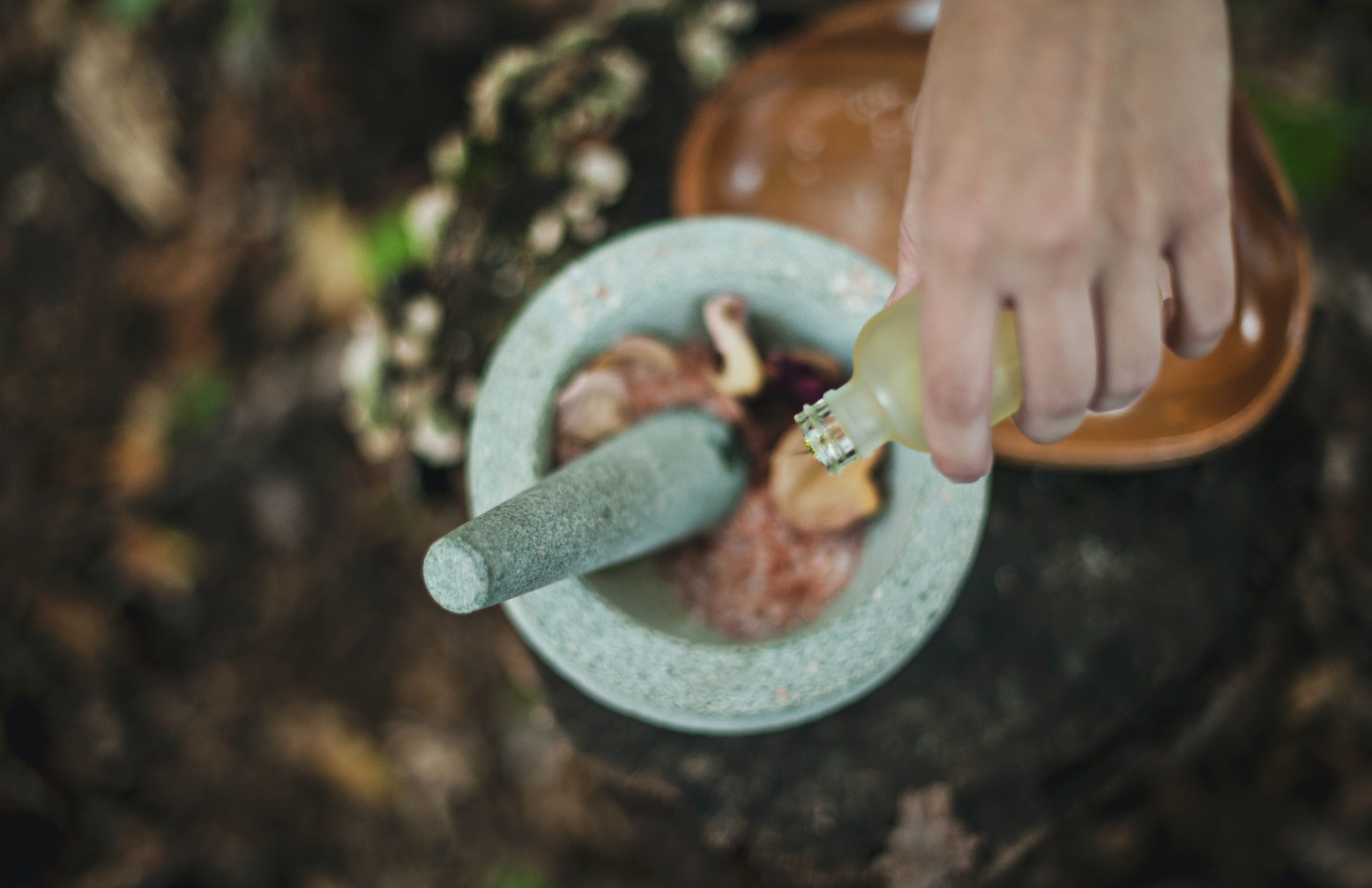
The last year has been a year of reset, a year of change and uncertainty, but a year of reflection and realisation for so many people. With so much time spent indoors, a new movement of prioritising wellbeing has risen and, with that, a renewed focus on scents, senses and our holistic reaction to them. It’s clear from looking at market reports that 2020, seemingly, boosted people’s love for fragrance. It also brought with it a shift in sustainability within the fragrance industry, with more and more people opting for natural scents and non-toxic (for both planet and people) ingredients.
In fact, according to a report by Allied Market Research, ‘the global fragrance ingredients market was valued at $13.6 billion in 2019, and is projected to reach $16.1 billion by 2027, growing at a compound annual growth rate (CAGR) of 3.8% from 2020 to 2027. Rise in demand for eco-friendly, natural, and custom-made perfumes along with higher standards of living are some of the key factors that are expected to drive the market growth during the forecast period.’
What’s more, as the report continued: ‘Based on type, the natural ingredients segment is expected to grow at the highest CAGR of 4.3% from 2020 to 2027, owing to preference of consumers toward therapeutic benefits of essential oils in aromatherapy and increase in spending on beauty and personal care products.’
But who is driving the change? Integrally, fragrance producers, as well as consumers, have been rethinking what it means to be sustainable, and the results can be seen in initiatives across the globe. From refill stations in stores and a move away from plastic (as in many other industries) to focus on recycling and re-using, to small-batch producing and a push toward using regulated natural ingredients within, there’s been big moves across the last year.
We know that perfumery derived from plants traces back as far as ancient Egyptians and Persian history, so it’s perhaps no surprise that we are doing away with the synthetics and making a move back toward natural botanicals.
Natural doesn’t always equate to sustainable, though. In fact, this is another huge problem in moving towards a cleaner and better planet. So, when it comes to fragrances, it’s worth exploring and researching at-risk botanicals to help you ensure that the natural ingredients all over a certain brands’ packaging isn’t simply green washing and contributing more to the wider sustainability problem. Endangered plants pose a great risk to the world, just as endangered animals do. Focus your attention on brands that steer clear of compromised flora and fauna.
What’s great to see is that the younger generation are actually much more aware of green washing and the concept that natural doesn’t always mean good. Instead, younger people are more likely to research scientific alternatives that, although may be synthetic, are actually more sustainable in the long run. A recent report by London-based market research firm Mintel showed that they believe it doesn’t have to be about one or the other. In fact, they believe that the way forward is to fuse science and nature.
The shift in sustainability, then, is coming from brands developing new technologies to extract essential oils and create safer and cleaner synthetic alternatives. Chemical & Engineering News reported that: ‘Large fragrance and ingredient firms like Givaudan are developing nonendangered, sustainable sources of natural ingredients. At the same time, the company has launched a program to make the synthetic side of its business sustainable as well.’ Using a combination of both clean synthetics and natural extracts is likely the most sustainable route forward. Plus, it allows consumers a way of knowing how truly sustainable and ethical their chosen product is.
Of course, it’s not just what goes into the product, packaging is a big part of the problem too. And it’s not just about the obvious culprits such as plastic, either. ‘The sound of the magnet in the cap of a perfume bottle, much like closing the door of the high-end car, is a mark of a truly luxurious brand. Funny how opulence always ends up being a bit problematic,’ says sustainable fragrance brand Bel Rebel, in response to how sustainable they can make their product.
‘Did you know that if a perfume bottle cap contains a magnet you have to take it out before it can be recycled? We decided to make our caps without magnets to avoid this. It’s a small detail that makes being a bit less harmful to environment easier.’
So, to simplify it, what are the main factors you can consider and look out for to approach fragrance more ethically and support the industry’s shift in sustainability? Start with sourcing; research who makes the scent and where they source the ingredients. Look at the label and ensure you understand the origin and meaning behind each ingredient listed. According to a report by the EWG:
‘A rose may be a rose. But that rose-like fragrance in your perfume may be something else entirely, concocted from any number of the fragrance industry’s 3,100 stock chemical ingredients, the blend of which is almost always kept hidden from the consumer. Makers of popular perfumes, colognes and body sprays market their scents with terms like “floral,” “exotic,” or “musky,” but they don’t disclose that many scents are actually a complex cocktail of natural essences and synthetic chemicals – often petrochemicals.’
Consider your stance on social ethics too and research whether the brand does any work for social enterprises, as well as feeding into sustainable ingredients. Do some real digging and see if you can find a natural brand going the extra mile with regenerative efforts too. Lastly, check how the product is tested and ensure it’s not tested on animals.
With a mission to harness the power of commerce for social good, this is a brand we’ve had our eye on for years. The brand produces clean and sustainable perfume and uses it as a vehicle for social impact and the economic empowerment of women. Sana Jardin is built on the principles of a circular economy – their alternative business model enables the women in their supply chain to become micro-entrepreneurs by up-cycling the waste products from perfume production.
Made in London and packaged using mushroom packaging created in the Netherlands, Bel Rebel experimented with unexpected ingredients to produce ethically-sourced, small batch fragrances.

Founded in Amsterdam by former winemaker and New Zealander Frances Shoemack in 2012, Abel is on a mission to blend the pleasurable world of perfume, with the conscious simplicity of nature. The unisex perfumes use only natural ingredients and, as a brand, they are on a mission to transform transparency on parfum labelling. You can find their petition here.

Using 100% natural plant oils and tinctures, Sigil’s perfumes are hand-blended in Los Angeles and are gender-neutral. They don’t compromise on natural and choose only organic, wildcrafted, and sustainable materials.

This small-batch perfumery in Somerset is stripping perfume back to its artisan roots and extracting 100% pure fragrance oils from plants. They release four seasonal fragrances a year and, each season, they will blend just one bottle for each of the names on their production ledger. No more.

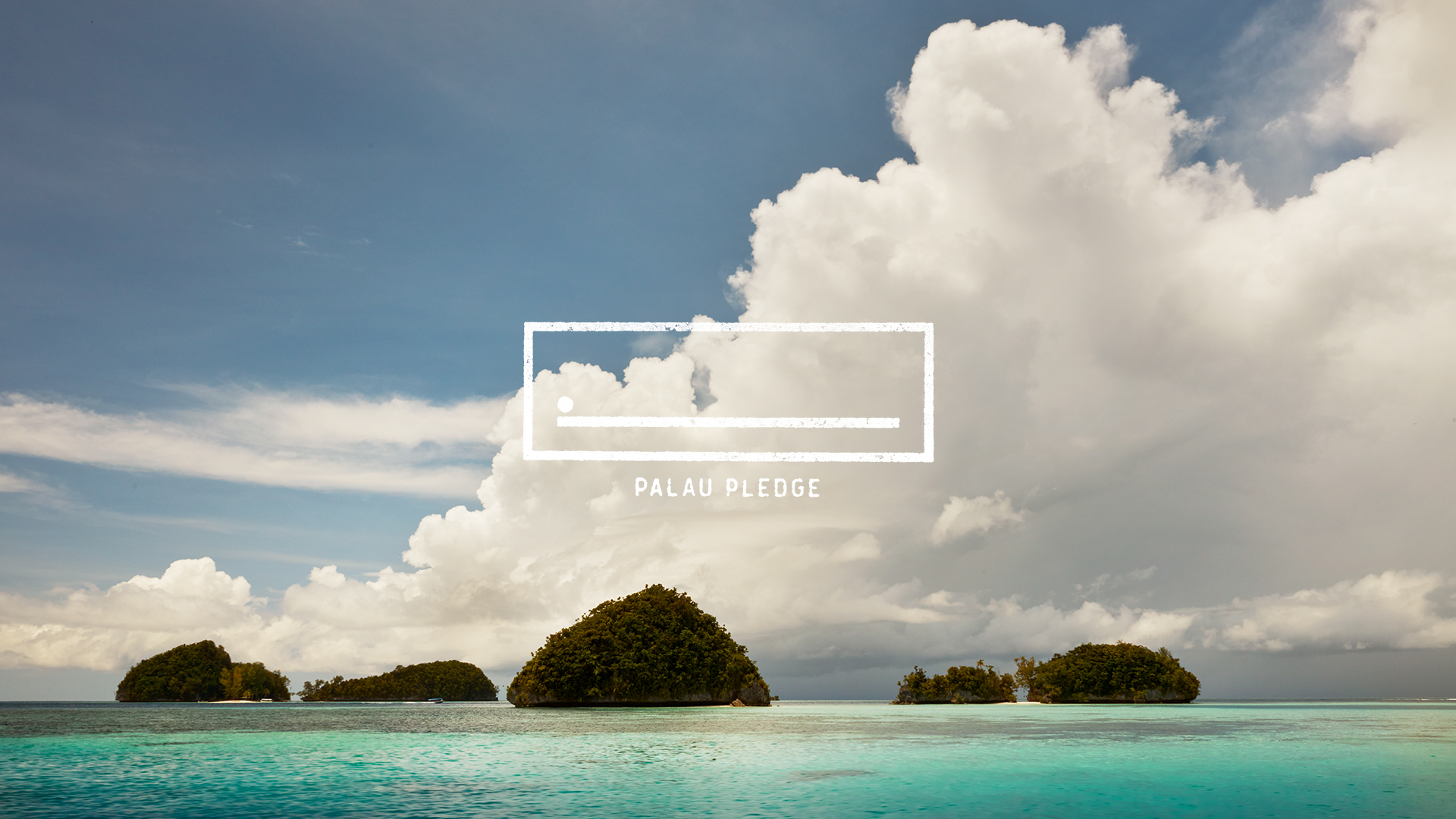
Palau is a place leading the charge when it comes to environmentally conscious travel, pioneering a new model in sustainable tourism. They’ve been ahead of the curve for a while now, with the government having established one of the world’s largest marine sanctuaries, as well as banning tour operators from utilizing single-use plastics and Styrofoam. With the help of Sustainable Travel International, since 2020, they have also been protecting its marine environment through the adoption of the world’s strictest national sunscreen standard.
Now, Palau Bureau of Tourism has recently launched a new project, pulled together with the aim to mitigate its tourism-based carbon footprint. The organisation has partnered with Sustainable Travel International and Slow Food, and is looking to develop a transparent carbon-management plan. According to a report by the Palau government, climate change has been recognised as the greatest challenge for the sustainable development of Palau. ‘Thus the climate change policy cuts across all aspects of sustainable development.’
It’s perhaps not surprising that, as a remote island nation, made up of an archipelago of 500 islands in the western Pacific, the Republic of Palau is under threat from climate change. Rising sea levels are a terrifying concern, as well as over and high-volume tourism (or tourism without conscious awareness, at least). In fact, over 25 per cent of Palau’s landmass sits under 10 metres above sea level, and The Green Peace Islands in Peril report estimates that several of Palau’s inhabited islands may disappear within the next 100 years.

With sea levels rising, intensified tropical cyclones and weather bringing increasing threats, the infrastructure of Palau has to adapt. That’s not to mention the fact that coral bleaching endangers marine life and the beauty that tourists want to see, and that climate change could disrupt supply chains, leading to food insecurity.
It’s for this reason that Palau is taking action. Tourism is Palau’s main industry, so it’s vital to maintain and develop this, and support this in every way possible. To put it into perspective, in 2019, more than 89,000 international tourists visited the country, which has a population of just fewer than 22,000. The United Nations Development Programme states: ‘Tourism is the country’s economic base and is an extremely important industry, contributing US $67 million, or 47%, of its Gross Domestic Product (GDP).’
But, it’s also crucial for us to recognise that tourism is ultimately driving forward the negative impacts of climate change. Tourists fly in from overseas so, of course, fossil fuels are increased and most of these tourists consume overseas imports, causing dollars to leave the local economy. In fact, 85-90% of the country’s food is imported from abroad, producing carbon emissions.

According to the Palau government report, ‘policy concern remains the need for finding a balance between utilizing the natural environment as a driver of economic growth for tourism, and preserving the environment for the cultural, social and economic well‐being of current and future generations and for future tourism development.’
So, what will the project do and how will it work? Excitingly, it is taking an innovative destination-level approach that includes promoting local food production within tourism and developing a carbon management program for tourists – breaking ground with this initiative in the hope that it inspires other destinations.
As part of the initiative and as a beautiful, almost poetic, way of ensuring people declare something worthwhile at customs, Palau is the first nation on earth to change its immigration laws for the cause of environmental protection. Upon entry, visitors need to sign a passport pledge to act in an ecologically and culturally responsible way on the island, for the sake of Palau’s children and future generations of Palauans. Children from all over Palau helped draft it and as the initiative continues to reach out to Palauan businesses, they’re continuing to work with the next generation of Palauans to shape and develop the pledge.

Similarly, to compensate for tourism’s unavoidable emissions, the project will develop a first-of-it’s-kind carbon management programme for tourists to Palau. This will be in the form of a new online platform, on which visitors can calculate and offset the carbon footprint that is associated with their trip. These offset contributions will work harmoniously with Palau’s marine conservation, and will be invested in blue carbon initiative such as mangrove restoration. It is estimated that this unprecedented move has the potential to raise over USD $1 million a year for these carbon reduction initiatives.
In response to the need to encourage regenerative tourism as well as sustainability, the project will increase the proportion of food sourced from local producers and work to reduce the hospitality industry’s dependence on imports. It will also celebrate the islands’ gastronomic heritage, build the capacity of local farmers and fishers and create income-generating opportunities for local communities.
‘The rapid growth of an unsustainable tourist industry based on broken food systems has been a key driver of the climate crisis and ecosystem destruction,’ says Paolo di Croce, General Secretary of Slow Food International. ‘This project represents the antithesis, a solution that strives to strengthen and restore value to local food systems, reduce the cultural and environmental damage caused by food imports, and improve the livelihoods of food producers both in Palau and beyond.’
With such enormous potential to turn the tide on climate change and act as a visible roadmap for other destinations to follow suit, there is a real chance this could inspire others to look at their climate resilience strategies.
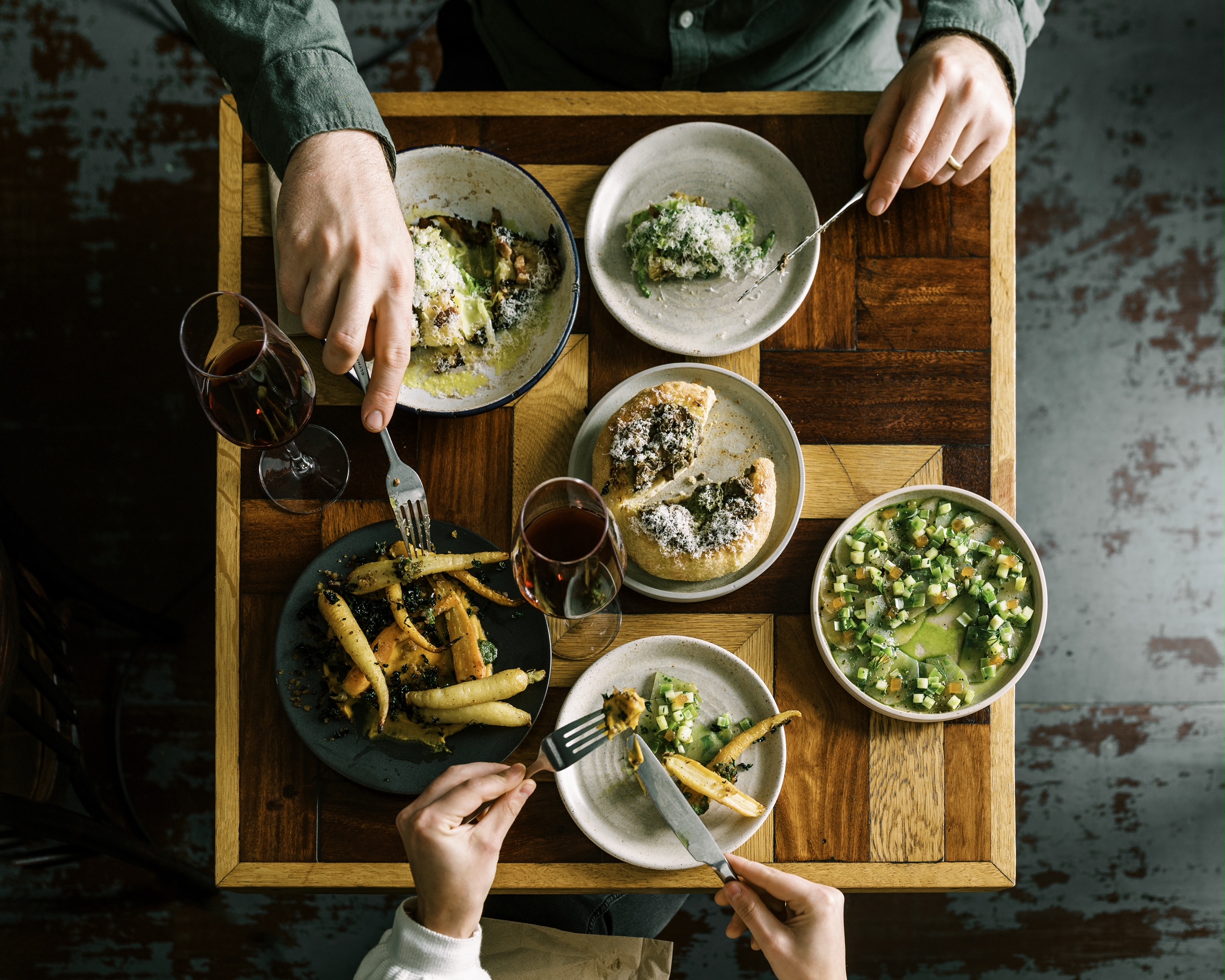
With its ethos of prioritising and elevating veg-centric cooking, and its stylish and approachable neighbourhood vibe, Root, which is situated in Bristol’s trendy Wapping Wharf and part of the Michelin Guide, has been steadily taking the south west by storm over the last few years.
Now, head chef Rob Howell is releasing his debut cookbook, Root: Small Vegetable Plates, A Little Meat On The Side, which is published by Bloomsbury and on the shelves in spring 2021. As with everything Rob does when it comes to cooking and his relationship with food, you can expect inventive and inspiring recipes, and a real sense of pure heart and soul.
Rob is known from his time as head chef at Josh Eggleton’s Michelin-starred Pony and Trap in Chew Magna. He counts his time with Josh as where his real thoughts, passion and processes around sustainability and ethics came from, and Root was born from this and the realisation that there was a gap in the market for a restaurant centred around this.
It started with the idea of meat and fish on the side, but Root became so popular for the vegetable dishes, it soon transpired that these should take centre stage. ‘We didn’t expect it to take off the way it did,’ smiles Rob. ‘A small amount of meat and fish is sometimes used on the specials board, but it’s all about the veg. We work as much as we can with local producers, and not only is it good for the world and us, but the vegetables are delicious too. When it comes to vegetarian eating, I think people forget that vegetables can be so good and focus on meat substitutes too much.’
In terms of eco eating, there’s some argument that a veg-centric attitude is the most sustainable way forward. According to a study by Harvard: ‘In 2019, the EAT-Lancet Commission developed the world’s first scientific targets for healthy and sustainable food systems, including a “planetary health diet” with defined daily consumption ranges for each food group. This dietary pattern – characterized by a variety of high-quality plant-based foods and low amounts of animal-based foods, refined grains, added sugars, and unhealthy fats – is designed to be flexible to accommodate local and individual situations, traditions, and dietary preferences.’
In general, a diet higher in plant foods than meat is more sustainable than a diet higher in meat than plant foods. Essentially, there’s a balance to be struck, and veg-centric eating does exactly that. For real change to happen, over a period of time, each step on that journey to sustainability has to be achievable and able to slot into a huge number of the population’s lives instantaneously.
Rob is not a vegetarian or a vegan, but he does follow a diet where vegetables and green eating is prioritised. ‘I’m eating it less and less, and I only try and buy meat where it’s a special occasion and from a decent source,’ he says. ‘If we can all be a bit more aware of what we are eating, this is a massive part of it and the problem with food sustainability, then we can get to know the seasonality of food. I can honestly say that the Root kitchen produces less waste than any other restaurant I’ve worked in before.’
The menu at Root is ever changing and adapts to what is available, what veg is in season and what works best at the time – the suppliers tell them what they’ve got and they take it. Compare this to a menu with a huge magnitude of different dishes, many of which using lots of different ingredients, and you naturally end up with far more waste at the end of a shift.
Interestingly, Rob notes that, with Brexit, we may not be able to get all of the fruits and vegetables that we are so used to getting year-round, which might actually not be such a bad thing. It could teach us how to deal with food more seasonally, and eat crops when it’s the most nutritious.
I wonder if Rob thinks that there are big misconceptions when it comes to sustainability in food. ‘It needs to be realistic, as everyone is in a different situation,’ he says. ‘There are all of these expensive products being sold after people have jumped on the vegan hype, so people think they can’t afford to be vegan or vegetarian. Just knowing how to cook vegetables is really important.’ Clearly, as with Root, it’s about taking it back to basics and not making it complicated.
What strikes me, as one of the most sustainable elements of Root, is the way in which it continues to change people’s perceptions and present vegetarian dishes in a non-preachy, non-idealised way – it’s accessible, raw and realistic. Root focuses on the vegetables for what they are and, in turn, showcases their diversity to people – it takes away the very common conception that a meal is not complete without meat.
‘We’ve got an open kitchen and we get a lot of families where, perhaps, the whole family including grandparents have come to Root because the daughter is vegan, and you can see their scrunched faces,’ laughs Rob. ‘But the amount of people, who have then come up to us at the end, shook our hand and said that they didn’t realise a meal of vegetables could be so tasty.’
And now, the book is set to do the same. I wonder how Rob feels about bringing out a cookbook? ‘I’ve spent most of my earnings my whole life on cookbooks, so to write my own is insane and is an incredible feeling,’ he laughs. ‘I didn’t want to go down the preachy route, or to tell people what to do, but I just want to show people what you can do with vegetables and make it more exciting and accessible. Hopefully, this can help people move toward eating less meat and fish. The photography is beautiful and I really hope it gives people a lot of inspiration.’
Made up of 100 recipes of Root dishes from the last three years, Rob hopes that the book will help people to discover new vegetables, and discover recipes with vegetables that they may not otherwise know what to do with. I, for one, can’t wait to devour the book and for the world to open up again so that I can pay Root a visit. It’s going straight to the top of my post-lockdown bucket list…
If you follow the seasons, you’ll not only be eating produce at its best, but it usually lends itself to being grown closer to home too.
What is being produced around your area, and you may find local food markets or producers right on your doorstep that you never knew about.
Swap out meals that you would usually use meat in. Lasagne? Make it vegetarian. Vegetable curry? They are always just as delicious!
It’s always a great way to make the most of what you have in your fridge, so if you have big vegetables such as swede and celeriac that are hard to use all of, make big batches of meals and freeze.
Freeze fruits like blackberries and raspberries when they are in abundance so that you can use them throughout the whole year and don’t have to buy berries that have been imported.
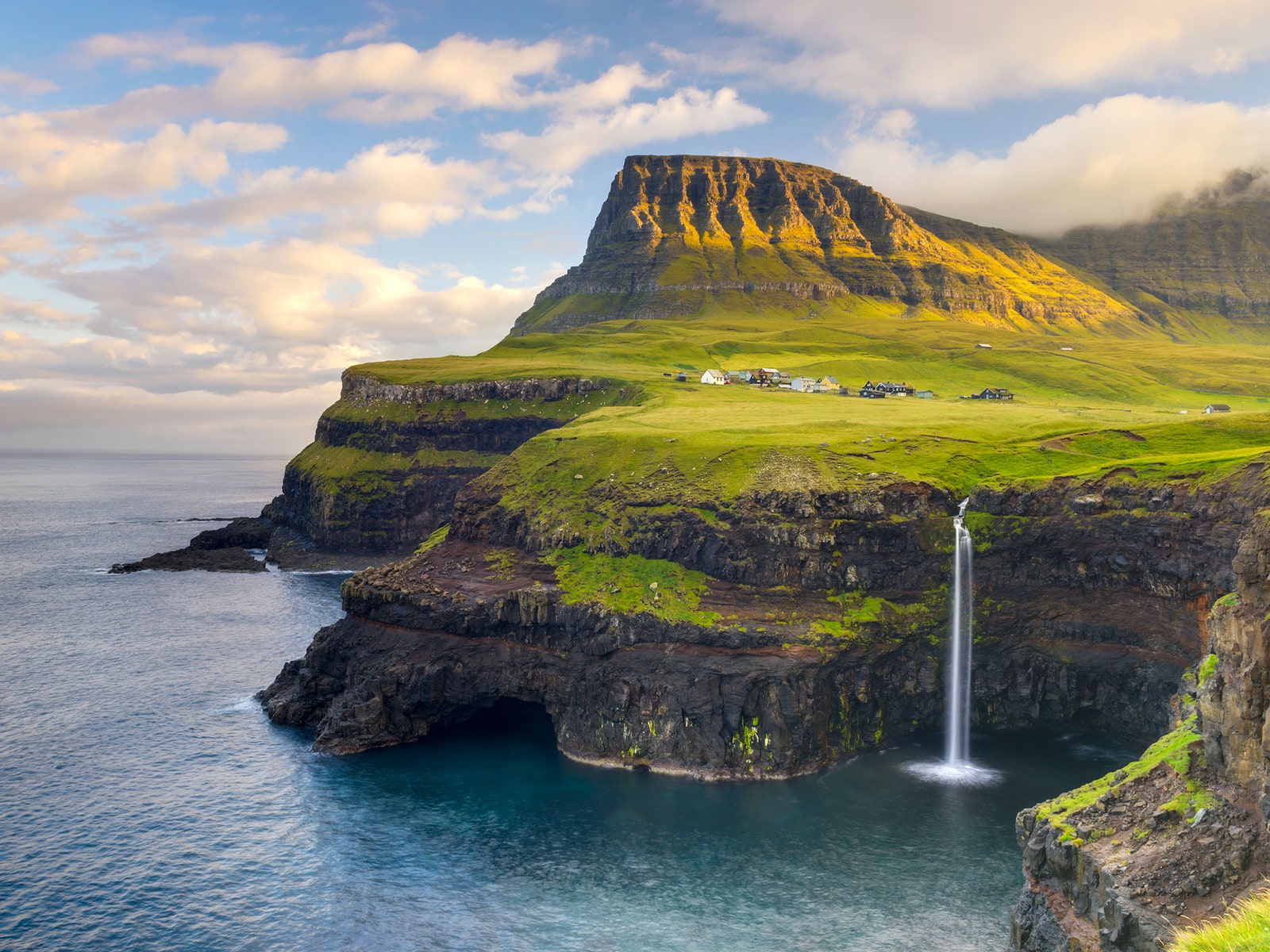
Regeneration: the act of improving a place or system, especially by making it more active or successful. Perhaps the biggest plus to come out of the Covid-19 catastrophe is the upward curve being seen in global environmental awareness – often, when there’s devastation, ground-breaking changes are shaped.
In an exciting development, everywhere you look at the moment, you’ll find people talking about and pioneering the idea of regenerative travel – which, ultimately, is a pretty brilliant start to 2021. This week, Visit Scotland became the first national tourism board to declare climate emergency and to outwardly focus on commitments to promote regeneration. Turn elsewhere and you’ll see that the Global Wellness Summit placed regenerative travel within its top wellness trends forecast, declaring it as a concept of ‘leaving a place better off than you found it.’
But what does it really mean? The term was debuted in 2020 by Elaine Glusac, a New York Times journalist who wrote: ‘Tourism, which grew faster than the global gross domestic product for the past nine years, has been decimated by the pandemic […] If sustainable tourism, which aims to counterbalance the social and environmental impacts associated with travel, was the aspirational outer limit of ecotourism before the pandemic, the new frontier is “regenerative travel,” or leaving a place better than you found it.’

Regenerative travel goes further than blatant eco-credentials and focuses on community, education, wellbeing of locals, as well as conserving the environment. It’s not enough anymore to simply count a token effort of sustainability activity. You must challenge things, take it further and really look to making places better and maintaining them for future generations. Just like regenerative agriculture gets to the very core of the soil, regenerative travel has to dig deep. As travellers on the move post-pandemic, we must aim to give as much, or more, than we are taking.
Of course, sustainable travel is about carbon footprints, ecosystems and nature too, but for real regeneration, there needs to be a focus on communities, real people and the direct economic benefits of tourism too. Essentially, we have to see that we’ve moved into the long game – no short-term fixes or saying but not doing anymore. As Sam Edwards, Skyscanner’s Sustainability Lead said, we have to ensure that ‘local communities enjoy the direct economic benefits tourism can bring to where they live. This means building awareness, educating, investing in technology and offering consumer choice. It’s about promoting intelligent tourism growth and looking at both over-tourism and under-tourism, too.’
We seem programmed to believe that more money in business equates to unethical actions and progression – but what if we changed that? Flip on its head the idea that more money, more success and more business in the travel sphere means that greed succeeds and harm is caused. Instead, we can use it to create opportunities for people, places and environments. Luxury sustainable projects such as The Red Sea Development place improving the sociological and environmental conditions of the host country at the very heart of their actions – these are the exciting developments to look forward to post-pandemic.

Aiming to set new standards in sustainable development, the regeneration project encompasses an archipelago of more than 90 pristine islands, miles of desert and dramatic mountain landscapes, and is creating opportunities for local communities. Cutting-edge technology will help to effectively limit over-tourism and preserve the environment. In particular, the Red Sea Project will mitigate carbon dioxide emissions, waste production, and light and noise pollution, maintaining the destination at a level equivalent to a Marine Protected Area.
The Future of Tourism, too, is a coalition of six non-governmental organizations that have come together to stand united in an appeal for change. They can see the requirement for a fundamental shift in how tourism works, to meet the needs of destination communities and their environments, and are actively campaigning to pioneer this shift. A large part of their work is to show that tourism, by its nature, involves the destination as a whole – its ecosystems, natural resources, cultural assets and traditions, communities, aesthetics, and built infrastructure. While people are using their time grounded due to Covid-19 to think about the future, they’reeir asking everyone to come together to support their global community and guiding principles.
But, aside from supporting and signing along with platforms such as the above, at its simplest, what can we do?
1 – Use reputable and forward thinking booking platforms such as Regenerative Travel. It showcases sustainable, visionary destinations and makes it easy and accessible for those who love to actively make a positive change in the world do so.
2 – Deliberately pick hotels and resorts that are holistically prioritising existing communities, playing a vital role in bettering wellbeing for locals and reducing their environmental impact.
3 – Avoid places suffering from over-tourism – actively seek out destinations that are less frequented.
4 – Continued community support – explore how your regenerative travel practices can continue once your holiday is over.
5 – Think about where you spend your money. Travelling means you will have costs, so look to who you can truly benefit with this money – shop local and create mindful connections with local communities.
Consider regenerative travel is to be the focus of the next few years (and, hopefully, long into the distant future), what does this mean to you? If you want to contemplate your next ethically thought through movements and get excited for plans in the future, take a look at these places doing more than just their bit for the community, the planet and the wider world. Let’s work together to make this more than just a post-pandemic trend.
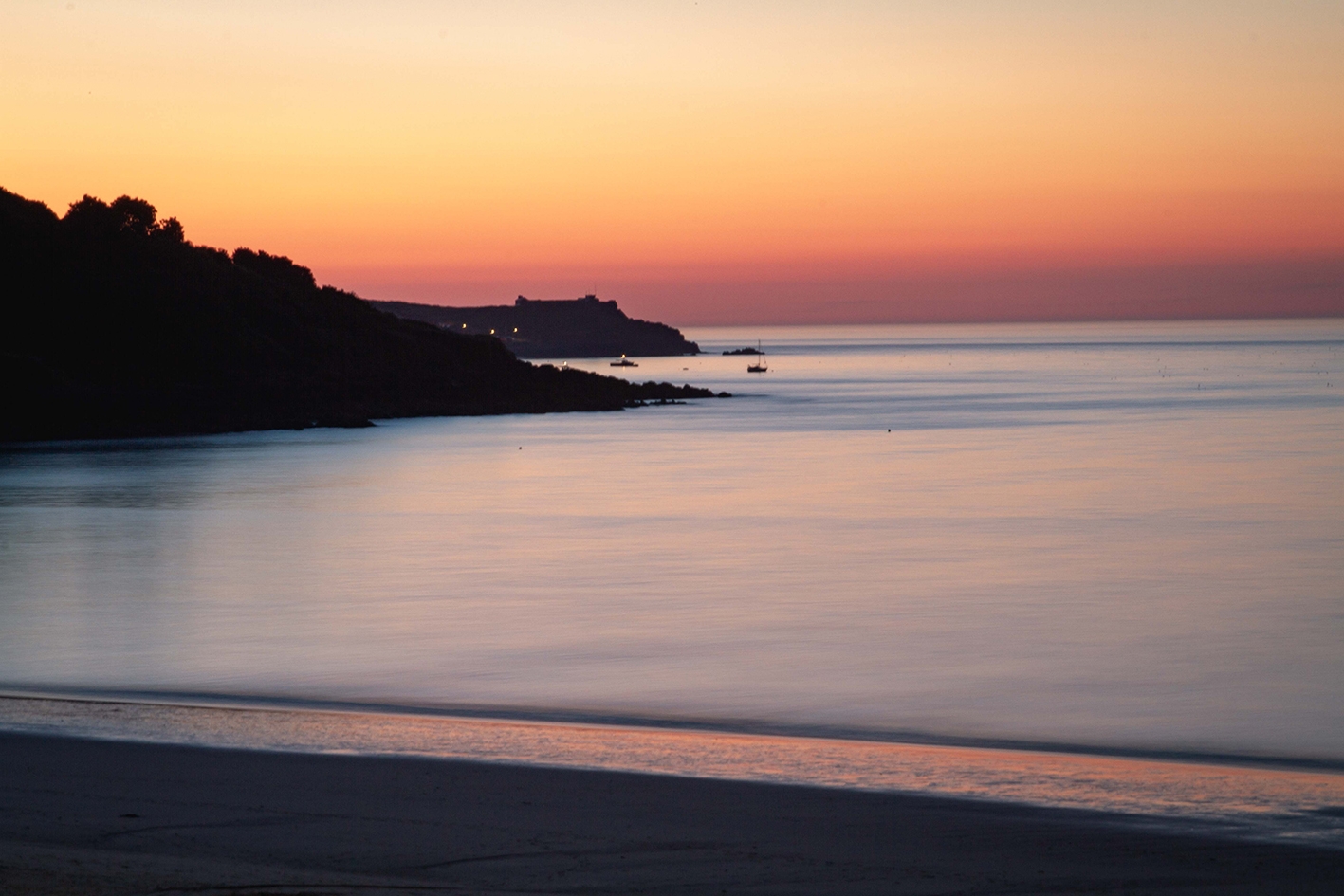
Throw open the curtains at Carbis Bay Hotel and you’re met with endless blues, sand so white you could be in Barbados and, if you’re lucky, even a pod of dolphins bobbing around in the calm waters. This is the location – one that is so engulfed by nature and environmental celebration – that has been chosen as the host of the inaugural G7 Summit.
The annual three-day meeting of the Group of Seven leaders has the power to shift the direction of economic growth. To host the meeting somewhere so intrinsically dedicated to supporting sustainability is exciting, with Julian German, the leader of Cornwall council, optimistic that the legacy of doing so will help the county move forward with investments in green energy.

The 45-room hotel, which overlooks a Blue Flag beach 20 minutes’ walk from artistic St. Ives, is one well worth visiting. Both the hotel, housed in the original cliff-side property, and the new self-catering lodges are stunning, but the Beach Lodges seriously won me over. Built using kebony, a sustainable product made more durable and aesthetically appealing through the infusion of bio-waste (a process called kebonisation, that permanently modifies the cell wall of the timber), they are incredibly low carbon.
Design-led, without being overdone, there’s no sacrificing style for a family-friendly affair – think hessian, slate and modern art. As if direct beach access, hot tubs in private gardens and the amenities of the hotel (breakfast can even be brought in hampers to your door) wasn’t enough, you can also expect freestanding copper bathtubs looking out over the ocean, and wake up to waves lapping at the garden below.
Pioneering in its sustainability initiatives, it’s no surprise that the G7 summit felt this hotel was a worthy host. With waste disposal at the forefront of their green ways, and an on-site Energy Centre that provides a carbon saving of approximately 70-tonnes per annum, Carbis Bay has been pushing ahead with changing the face of the future for a while – notably in hospitality realms.
As a travel writer, I often find that I’m drawn back to certain places or that situations lead me back to one place time and time again, and Carbis Bay is one of those. A few years ago, I stumbled across two inspirational men who’d set up a company called Oltco, a company that produces resin-based solutions from waste plastic. It transpired that, soon after talking, Carbis Bay became the first hotel in the world to install pathways and a promenade from Oltco, using the equivalent of 3.5 million plastic straws from the ocean.
Considering the hotel practically resides in the ocean, it would be rude not to consider the plastic plight, but Carbis Bay truly delivers, something that led to it being awarded the AA Eco Hotel of the Year in 2019. Prior to Covid-19, the hotel also partnered with ocean campaigners Parley to remove 50 metric tonnes of plastic from the sea. Clearly, protecting the ocean is a key part of the identity of Carbis Bay and their devotion to the water is seen through many of their in-house enterprises.
It’s a special place with a special soul, and couldn’t be a more fitting destination for a revolutionary event. If you like the idea of scouting out the location before the rest of the world descends, now might be a good time to get a pencilled-in date in your diary.
One of the most well known eco-hotels in the UK, adults-only The Scarlet is perched on rocks on Mawgan Porth beach and has 111 different ways it’s sustainable.
Having also won an award for being one of the best sustainable hotels, The Nare overlooks beautiful Carne Beach and adopts initiatives such as re-harvesting rainwater.
Another luxury hotel with a gold-standard green policy, The Greenbank Hotel is in bohemian Falmouth and a beautiful place to stop.
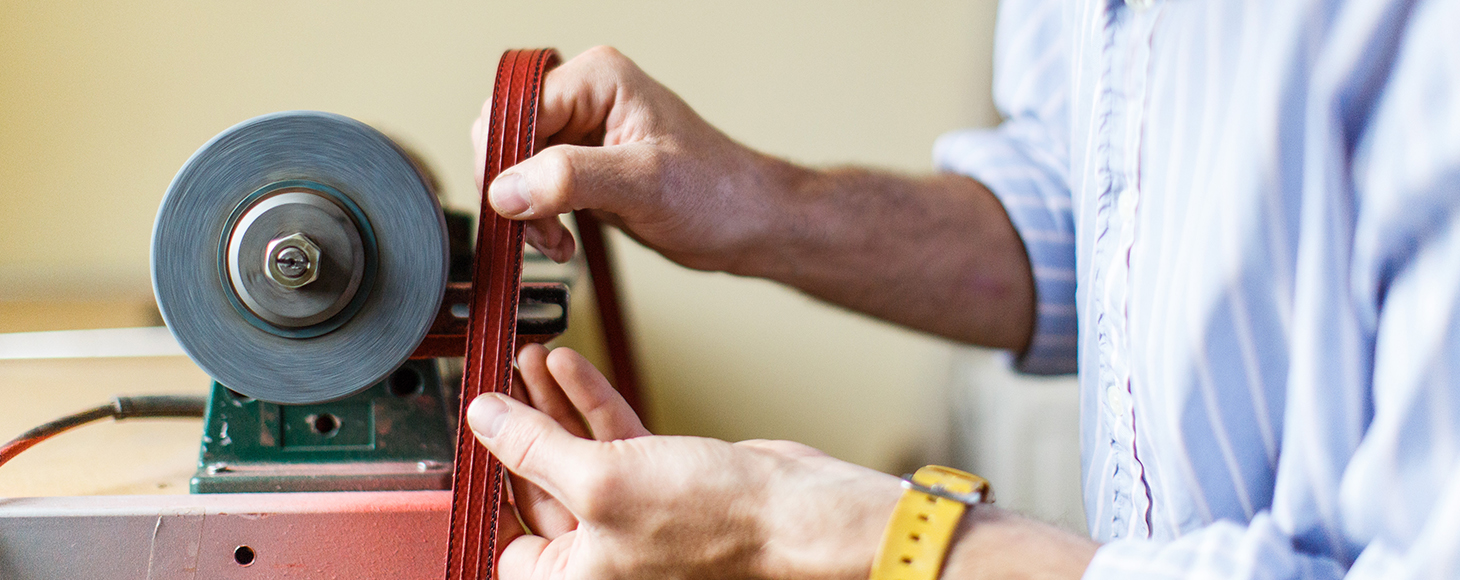
As more of the population join in on the fight to be increasingly sustainable, it’s no surprise that ethical champion companies such as Elvis & Kresse are gaining traction and being rewarded for their efforts.
In a recent report by McKinsey & Company, of surveyed consumers, ‘67% consider the use of sustainable materials to be an important purchasing factor.’ With the vegan leather market also newly projected to be worth $90 billion in the next five years, it’s obvious that there has been a huge shift in consumers paying attention to eco-friendly material alternatives. Specifically, as a by-product of ethical and sustainability attitudes changing, people are becoming more and more interested in issues surrounding landfill and in educating themselves on where materials come from and where they are ending up.
It could explain why recycled material brand Elvis & Kresse had such a busy and successful 2020, despite Covid-19 restrictions and economic effects. Since 2005, they have been rescuing raw materials, transforming them into luxury lifestyle accessories and donating 50% of profits back to charities. Fast-forward to today, and you can see one of their weekend bags in the new V&A exhibition, Bags: Inside Out, as well as a film about their processes and environmental mission.
The museum purchased their classic, decommissioned red fire-hose Weekend Bag and it’s now a part of their permanent collection. The closing credits of the V&A exhibition plays host to some of the most forward-thinking and innovative examples of sustainability in fashion, and this is where you can find the Elvis & Kresse bag. It sits alongside other incredible designers experimenting with innovative and environmentally sustainable materials, including a Stella McCartney backpack made from recycled ocean plastic waste.
Clearly, this is an impressive feat for a small sustainable company. ‘My jaw dropped to the floor,’ smiles founder Kresse Wesling. ‘To be a part of the longer narrative of the exhibition is amazing and, if I think of how it is for our parents and the people who have supported the business for a long time, it just makes everyone’s year.’

But, where did it all start? Originally from Canada, Kresse met Elvis in Hong Kong in 2004 and, after following him back to the UK, for the first time in her life, she found she could be flexible, so took the time to really reflect on what she wanted to do with her life. ‘I’ve always been interested in waste, and back then, you couldn’t just Google ONS data,’ she starts. ‘I went to the British Library and explored what waste looked like in the UK, where it was and how much was there. The data was pretty stark, with 100 million tonnes of material ending up in landfill and recycling rates abysmally low.’
Kresse realised that a lot of the information was unspecific and concluded that when you don’t have the specifics it’s virtually impossible to turn a problem into a solution. ‘I started going to landfill sites to get to grips with what was actually there,’ she says. ‘When you spend a lot of time at these sites, you start to see the patterns of material coming in. I saw a lot of trucks that were clearly coming from specific industries, so I started making friends with the truck drivers to understand where those materials were being collected.’
I laugh as Kresse likens her early explorations to being like a salmon swimming upstream, but the reality is that in the world of sustainability, this really is the case. Change, development and progression don’t come easily, and those pioneering for change have worked day in and day out – often in unconventional ways like making friends with lorry drivers! ‘It was hard work, but I felt compelled to do it,’ she says. ‘I started to realise that a lot of the materials were definitely recyclable and filled with opportunity.’
After realising that the fire-hoses from London were heading to landfill every time there was an issue in their lifecycle, Kresse started researching the material and what could be done with it. ‘I couldn’t abide with the idea that this beautiful heroic material was going to go to landfill, even if there was ostensibly nothing wrong with it,’ says Kresse. ‘I refused to give up on the idea that it could be re-used as something else.’
Now, for over a decade, none of London’s fire-hose has gone to landfill and over 200 tons of material has been reclaimed to create the luxury bags Elvis & Kresse are so known for today. They also recycle many other waste materials such as coffee sacks and parachute silks, and they work with the Burberry Foundation to solve the problem of the 35,000 tonnes of leather waste produced each year by the European luxury industry.
Although Kresse wouldn’t say she is someone who has a particular interest in fashion, she definitely had a clear vision from the very off. ‘At the beginning of my research, I knew nothing about fashion or luxury and you could argue that I still don’t. But, what I did discover was a report about how the luxury industry was failing people and planet, and I just thought of that as a structural failure that I wanted to change,’ she explains.
‘I was given the beautiful opportunity of fire-hose – it has so much potential and is designed to protect human life, so in its second iteration, we wanted to make sure it’s set up to give back. We have three guiding principles: rescue, transform and donate.’
Today, sustainability sits at the core of the business, and runs off into every element of what they do – but Kresse is clear that there’s still a long way to go. ‘No organisation is perfect but every time we discover something that we can improve, we change it,’ she says. ‘When the government says it’s going to take five years to outlaw Q-tips, I find it embarrassing. It doesn’t need to take that long, all of the changes are willpower based – it can just be done.’
Vying for change is something that comes naturally to both Elvis and Kresse and, as we discuss the challenges of running a sustainability start-up, the passion is evident. ‘We have the same challenges as any company. And then, there are a lot of people that say the burden of sustainability makes it twice as hard, but I disagree with that,’ says Kresse. ‘The environmental and ethical side is what makes it palatable. Running a business is incredibly difficult, so if you were also running a business that was exploitative or degrading the environment, I don’t know how you’d sleep at night.’
As for the future, where do they plan to go from here? ‘We’re looking at being completely regenerative as a business by 2030, and carbon neutral way before that. We’ve started four research and development projects, and we’ve got a couple of new materials in the mix, some of which will be ready to roll out this year,’ Kresse explains.
I wonder if Kresse feels positive about the direction in which the public perception of sustainability and consumerism is going? ‘There are so many problems at the same time, and that’s the big issue,’ she says. ‘You’ve got, in one sense, the rise of ethical production, and it’s growing and scaling, certainly, I’ve seen that over the last couple of years.’
But on the other hand, you’ve got fast fashion companies that are growing too, some of which, as Kresse stresses, are considered ethical-free zones. ‘So, we’ve got to address deep-seated cultural issues if we’re going to really get to grips with sustainability,’ she continues. ‘Trickle-down economics doesn’t work, and we have to accept that. We have to stop importing goods that have been produced in a non-environmental and unethical way, education and culture has to shift and people’s perception of success has to change.’
It’s about keeping the momentum, our finger on the pulse as consumers and continuing to campaign for change and we can certainly start by sharing the stories of, and supporting, those companies like Elvis & Kresse that are doing it right.
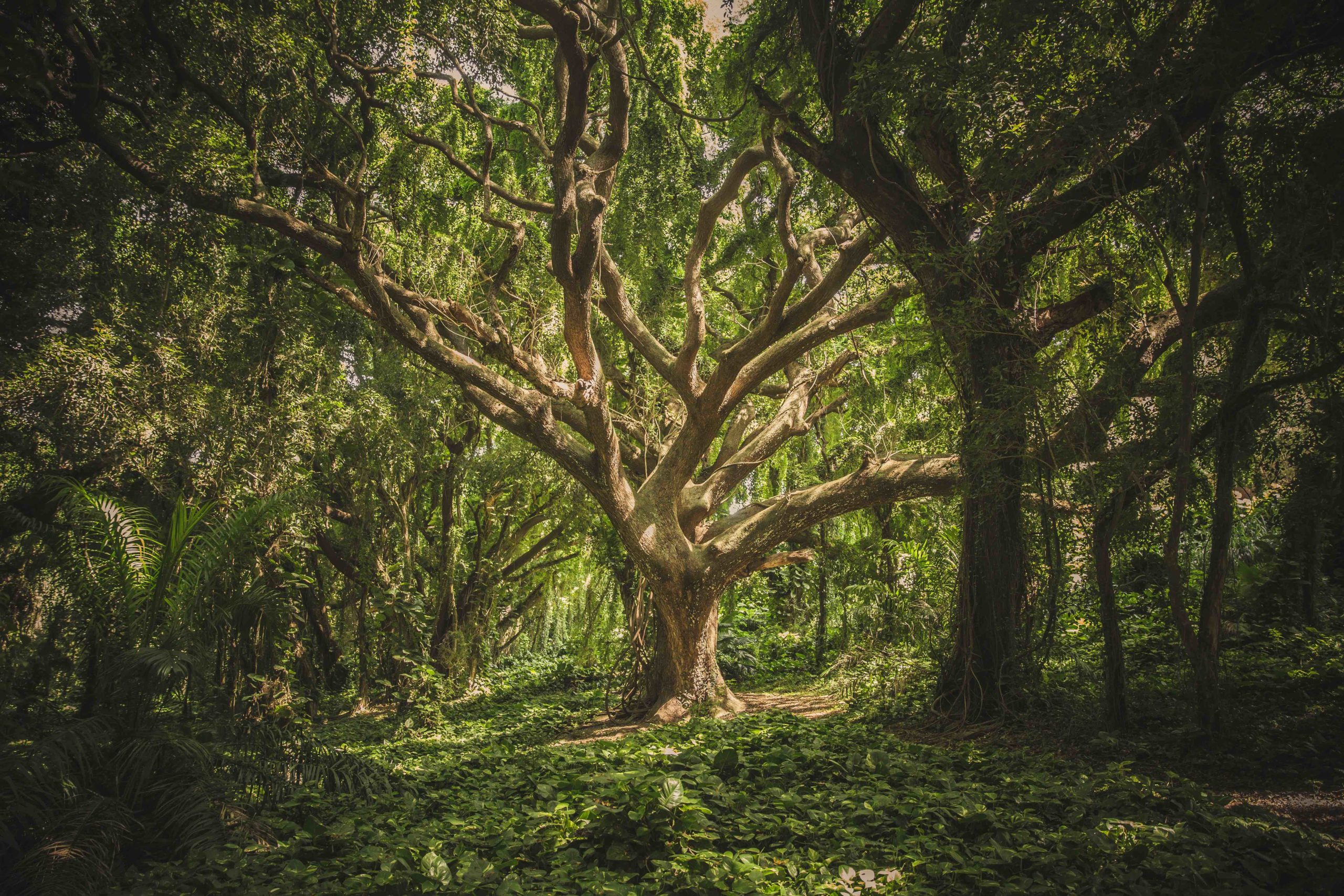
Aside from opting for a reusable cup, your impact on the planet and your carbon footprint is probably pretty far from your mind when you pop out for a simple flat white from your local coffee shop – am I right? Or what about when you do your weekly supermarket shop, or order next-day delivery from an online retailer?
Chances are, with the small decisions you make day by day, you don’t consider your carbon footprint. As it happens though, it’s often the tiny decisions that we make and the small actions we take everyday that have the biggest impact on the environment.
Step in Tred, a new debit card made from recycled ocean plastic that not only tracks your spending, but tracks your carbon footprint as well. With Monzo-style notifications, each time you spend on the card, the corresponding app will translate your action into the environmental impact. Dialling in for our chat from a tiny town in the Yorkshire Dales, it’s immediately obvious that friends and co-founders Will Smith and Peter Kirby have huge plans for their green start-up.

Continuing the theme, evidently, the biggest ideas come from the smallest, everyday moments. Sitting in a bar in Glasgow, Will found himself debating the plastic straw in his drink, against his friends’ earlier journey via plane from London to Glasgow. Which one was worse for the environment? Which one has the biggest impact on your carbon footprint?
‘It got us talking about the worst things for the planet – is it the straw, the flights, or is it buying clothes and going to restaurants? It’s really difficult to know where to pay your attention to when living sustainably. It’s like trying to lose weight without having a set of scales, so it’s hard to fight climate change if you don’t know your impact day to day.’
Will Smith
Will tells me that these early debates led him to try and find out what his carbon footprint actually was, but he found it difficult to do. Generic questions on the Internet about how many flights you take a year can only tell you so much, after all. Will decided to hone in on spending, as everything we buy has an impact on the world around us, so he knew it was a way people could track their footprint each day.
The first in the UK, the card could be a game-changer for helping people to make small lifestyle changes and understand the impacts of climate change more easily. They do say that slow and steady wins the race, and there’s certainly an argument that making small, achievable alterations will be more successful in the long run than making big, quick changes that become unrealistic or tiresome over time.

It’s this notion that small steps can lead to big change that is so central to Tred. Both Will and Peter are passionate about the sustainability plight, but don’t want to come across as preachy – it’s all about making green living accessible to all. Once you start seeing how easy it is to track, it becomes something that can seamlessly fit into your everyday life. In fact, you could do it as soon as tomorrow. They talk to me about how people really got behind the plastic straw, plastic bag and the keep cup movements, so both Will and Peter feel there is a real audience for the card out there.
‘We’re trying to make the climate fight positive, as it’s a super doom and gloom space. We want to help everyone understand his or her carbon footprint, and then prioritise small changes,’ Will tells me. ‘We want to bring sustainability into the mainstream so we’re not going to tell people to never go on holiday, we want to focus on tangible things that everyone can do.
‘When we started testing people’s reactions to our idea, it became clear that 90% of people don’t know what their carbon footprint is. No one knew it, everyone wanted to know it, and everyone wanted suggestions about how to be more eco-friendly. So, quickly we realised that people do want to live sustainably; it’s just that it can be difficult to know what to do. People want actionable steps.’
Will and Peter are hopeful that Tred fills the gap. And the model is fairly simple – the algorithm does all the hard work for you. So, how exactly does it work? With pioneering technology that has been developed over the last 12 months, the pounds that you spend will be converted into kilograms of carbon emitted. Each type of purchase generates a different amount of greenhouse gas and has its own unique impact on the environment. The algorithm analyses every purchase you make and categorises every transaction. This information is then combined with a wide variety of data sets, which allows them to translate it into its carbon emissions.

‘We wanted to reduce people’s carbon footprint in the first place and then increase how much C02 is being captured through tree planting. There is some money that is generated through card spend for the actual card company, and we put a percentage of that back into reforestation,’ explains Peter. ‘Hopefully, there’ll be a positive feeling that every time you tap, you are planting trees and reinvesting in the planet.’
At the end of each month, customers will be encouraged to offset their footprint via a certified tree-planting scheme in Scotland. Tred provides a personalised offsetting plan, so as your monthly emissions change so does the amount you offset. It’s really quite dynamic, something that makes the card unique and stand out. It gives you a detailed breakdown showing you where your impact is greatest and helping you change your lifestyle choices towards a more sustainable way of life.
‘If you’ve had an eco month, we’ll calculate your footprint and plant a few trees,’ says Will. ‘If you’ve gone on holiday and done a round-the-world cruise, we’ll plant a lot more.’ Carbon offsetting, at the moment, is really static, a set amount that doesn’t equate to anything personal, so with Tred, Will and Peter wanted to make it bespoke and central to the consumer journey.
‘We’re trying to bring personalisation to climate change. If you’re making changes to your lifestyle, you want something to tell you that it’s improving,’ continues Peter. ‘We’ll be able to track your carbon footprint coming down if you make the correct changes, so you’ll be able to see it too.’ Their plans don’t stop at the debit card either, and the boys hope to open Tred up to incorporate green investment schemes too in the near future. ‘The expanse of where we can get to with it is huge,’ beams Will.
Watch this space.
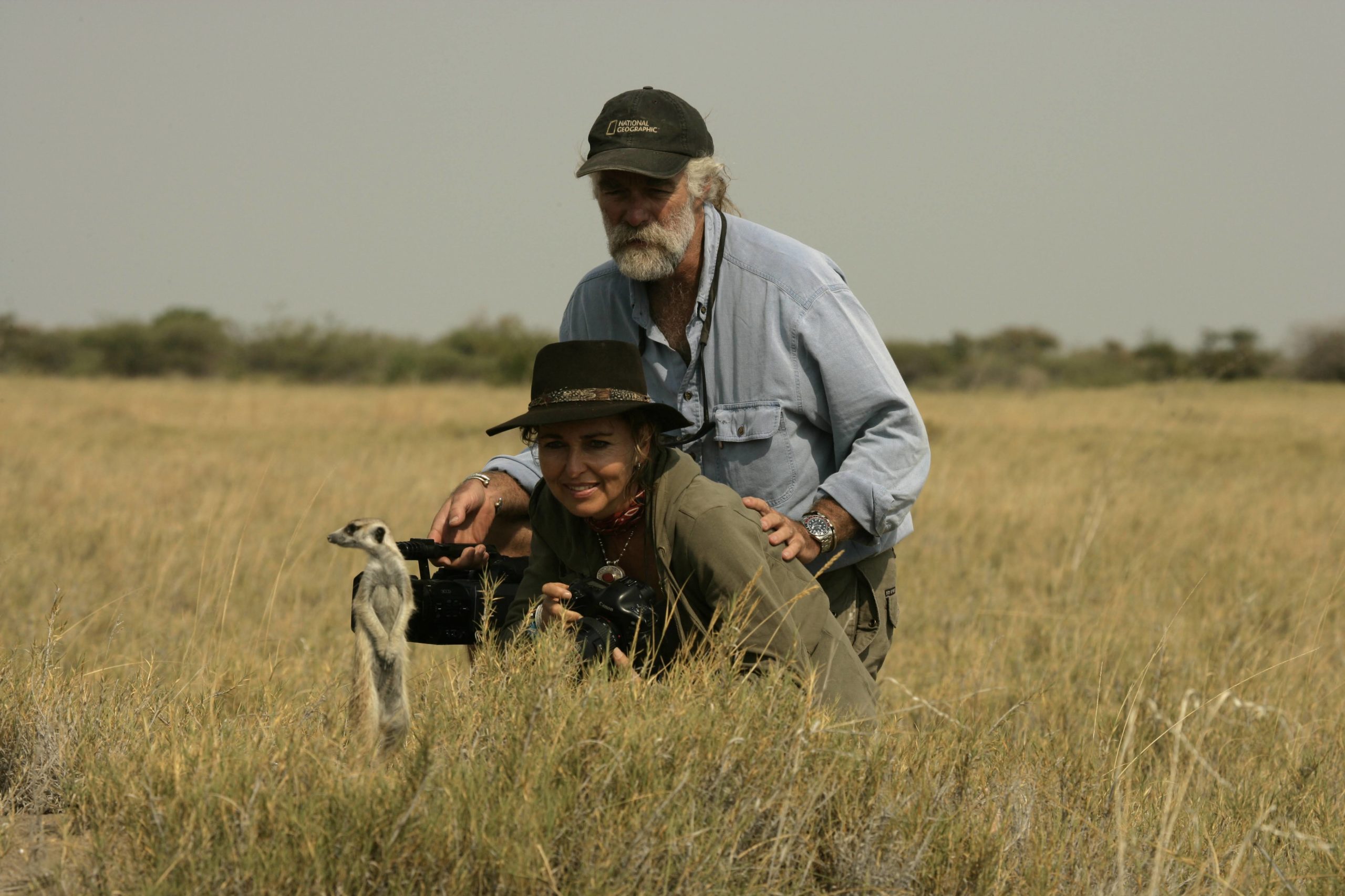
Africa is facing an additional pandemic, fuelled by the side effects of the current one and one that will result in a step back to more poaching, more poverty and more ignorance. Once we begin to ease our way out of lockdown life, the continent is relying on a new wave of interest from travellers and deeper, more considered tourism to aid its way out of it.
Fortunately, the impact of Coronavirus has inspired people to protect and nurture the places they visit. While seeking more fulfilling experiences post-pandemic, many more people than before are looking at ways they can travel while giving back. According to a recent report from booking.com, 67% of people want their travel choices to support the destination’s recovery efforts.
While perhaps only making a small dent in recovery from the catastrophic impact of Covid-19 in Africa, this is good news. Ecotourism has provided one of the biggest supports to Africa in the last decade, and without it, everything shifts. As The Financial Times reported: ‘The effects of Covid on conservation tourism in Africa have been seismic – on a continent where, in 2019, tourism contributed 14.7% of Namibia’s GDP, 10.7% to Tanzania’s, and 8.2% to Kenya’s. According to 2019 figures published by the World Travel and Tourism Council, wildlife-based tourism specifically generated more than US$29bn annually for Africa, and employed 3.6 million people.’
Conserving nature in a time of crisis is a sobering thing – conservation has all but been forgotten by the wider world throughout the pandemic. And, it’s important to note, it’s not just the animals. People are quick to assume that conservation and sustainability stops at the eradication of poaching, the care of animals and natural landscape recovery, but, of course, it goes so much deeper into communities too.
This is something that conservationist filmmakers, National Geographic explorers and writers, Dereck and Beverley Joubert have prioritised since the inception of Great Plains Conservation. ‘It’s interesting because the question about how we’ve reacted to Covid is almost an extension of how and why we started Great Plains,’ explains Dereck.
Having spent many years exploring across Africa and identifying the places and communities that were going to erode and decline, Beverley and Dereck established Great Plains in order to address this. ‘We started to buy up land to put an ecotourism model on to fund it. We look at areas that are vulnerable and how we can make them better, but it’s the community that is integral and at the heart of it – we invest heavily in the people.’
12 years in, Covid struck and, clearly, tourism was going to come to a halt but their conservation work couldn’t afford to. ‘We would rather collapse the company than lay anyone off, so we immediately transferred as many staff as possible into frontline conservation work,’ explains Beverley. ‘Many others have not been able to do that so joblessness is rife and disillusionment follows. Poaching, because of this, has gone stratospheric – there are places in Africa that have lost 80% of their wildlife in this last year.’
Great Plains established Project Ranger in March to combat this, an initiative designed as a solution to keep front line conservationists in the field, stopping poaching and supporting those who give so much each day to protect Africa. Contributions will supplement budget deficits with local ground partners by funding salaries, training, and operations of wildlife monitors, rangers and anti-poaching personnel.
Largely, this is a twofold initiative. ‘We really need to make sure that when Africa opens up again, there’s actually something to come and see – this keeps communities alive and protects wildlife,’ says Dereck. ‘But it’s also about keeping dreams alive, to ensure there’s a message of hope going out and that we’re protecting what we have today and focusing on what we need for tomorrow. It’s about education, looking to the younger generation to become conservationists in the future. We hang on the word hope – getting the rangers out there again, spreading hope to the kids.’
Of course, Africa isn’t alone in seeing the effects of little tourism, but it becomes problematic when you consider the conservation status of the continent pre-Covid. However, as a positive of the last 12 months, in a year where people have craved a renewed connection with nature, the pandemic has allowed for the realisation from many that ecotourism really is crucial.
So, what can we, as travellers, do to help? The key, it seems, is not necessarily in travelling less, but in being more mindful going forward. Delve into the why and what behind your travel choices. ‘It’s got to be about more than sending money. It’s a great opportunity for us all to be reflective and really think about the way that we engage with the planet. It’s time for us to redraw those contracts and renew our vows,’ Dereck suggests. ‘The very worst thing to do is to hunger for going back to normal – I don’t think normal was good. Think about the way you engage with the planet through travel, and with each other, and discard the things that are bad.’
As we chat, we reflect on how, as Covid-19 started, the media reported about new wildlife happenings, animals relaxing and cleaner air quality and I agree wholly that we should remember that. ‘I would hope that we want to retain the good things and ease back into travel with meaning – start planning that now,’ Dereck continues. ‘It would be wrong to say that the world was better when no one was travelling, as it leads to isolationism and xenophobia. Find the travel and hospitality companies that are doing it right.’
As always, Dereck and Beverley are ahead of the game with their initiatives and actions at Great Plains Conservation. The preservation work the Joubert’s do constantly is inspiring, and they’ve utilised this year to refurbish old camps and create incredible new ones too – built with sustainability and socio-cultural travel in mind. Although you can still consume meat in their restaurants, of course, they’ve introduced vegan cuisine at all of their camps. Following on from the idea of using this time of less travel to reflect and make small, manageable changes going forward, Beverley encourages us to consider reducing our meat intake. ‘Everyone could simply reduce his or her meat consumption to 80% plant-based and the rest could still be animal protein,’ she says.
They’ve also introduced additional private jet safari experiences. The private jet charters include a specially curated itinerary ensuring privacy and safety for small parties that stay in the same camp and travel between camps via private jet together. Utilising private lounges, immigration services and guides, chefs and butlers, the high-end service complements the fact that, once you are in Africa, space, clean air and natural social distancing surround you. ‘We’ve made it so that people can stay longer too and work from our camps,’ says Dereck.
While uncertainty and anxiety in travel prevails, lending itself to bubbled travel is a brilliant initiative from Great Plains. And, although it might not be for everyone, there’s no doubt that it’s attractive to and an appealing way to travel for wealthy individuals looking for a luxury experience.
When it’s safe to do so, I can’t wait to put down plans for an extended visit to Africa and it’s humbling to hear that the local communities involved with Great Plains are looking forward to welcoming travellers. ‘When tourists came back for a short while in the December period in Kenya, we saw how the Maasai people who work in all our lodges embraced the fact that tourism could come back,’ says Beverley.
‘They were passionate about getting back to representing their culture, the land and the wildlife. It’s a dedication, it’s not just a job for the community and they are so excited to welcome you all back.’
For more information on Great Plains initiatives and their new camps for 2021, take a look here.

With the world on pause, and our hands being forced to slow down, recalibrate and take stock, it seems there could be some positives appearing from these uncertain times. We can expect to see a more eco-conscious mindset in the way people travel moving forward, with a recent report by booking.com showing that 53% of global travellers want to travel more sustainably in 2021. It’s not surprising, then, that there are some exciting green hotels due to open in the new year – they are poised to push boundaries and offer us conscious passengers the escapes we’ve been dreaming about.
With people still nervous to travel due to the pandemic, travellers are spending the increased time at home focusing on how they can have a heightened tourism experience in the future. In fact, next year, it’s expected that many people will only travel if there’s a greater good involved in their trip and if they deem it to be truly worth it.
The founder and CEO of Responsible Travel, Justin Francis, says: ‘Tourists will attach increasing value to genuine sustainability measures and the desire to reconnect with nature will see re-wilding and conservation breaks take root.’ Luckily for us, there are some new and pretty spectacular openings to discover in the near future. Here are some of the most anticipated and inspiring arrivals to get us dreaming about stepping foot in that arrivals hall again one day soon.
With every project that Habitas develops, a refreshing purpose is prioritised from the outset. Central to their ethos is a defining idea that each resort has to make a lasting impact on local communities through education, employment and by creating sustainable micro-economies. Sustainability is controlled carefully, ensuring that the design, manufacturing, development and operations of each new ‘home’ is in keeping with their ethos. In an exciting year for the brand, 2021 will see not one, but four, new properties launch.
First up, in January, Habitas Namibia is launching with a focus on sustainability, community and a shared experience centred on a unique safari experience. Also in early 2021, a new resort on Mexico’s Lake Bacalar will open. Built sustainably, it will feature 35 cabanas that blend with the surroundings and the work of the brand’s impact philanthropic arm, Habitas RISE, will play an integral role in exploring lagoon and stromatolite conservation.
Opening in spring, Habitas AlUla will be the brand’s first property in the Middle East and perhaps one of the most anticipated – you’re unlikely to have stumbled upon anything like this in this location before. Located in Saudi Arabia’s AlUla, a historic region that has remained closed to the outside world until now, the hotel will be a community-inclusive, sustainable hospitality ecosystem with a localised approach to resourcing, training and employment. Finally, later in the year, you’ll find Habitas Todos Santos spanning over 10-hectares on Mexico’s Todos Santos beachfront and can expect a farm-to-table restaurant, holistic spa and organic herb garden.
Leaders in conservation and philanthropic pursuits, Great Plains Conservation offers some of the best in conscious travel options for those wanting to give back when they journey. Throughout the Covid-19 crisis, they’ve used the time to refurbish and improve existing camps and create three new camps for 2021 openings. The new camps are entirely solar powered, and they also incorporate bio-digesters that convert vegetable scraps into methane cooking gas, composting, grey water recycling and the elimination of single-use plastics. Tembo Plains is being constructed in the private 130,000-hectare Sapi Reserve adjacent to the Zambezi River, and founders Dereck and Beverley Joubert are currently designing the camp themselves, paying homage to the ancient cultures in Zimbawian culture. A new camp is also opening in mid-2021 on Peperre Island in Botswana, just south of the Panhandle in the Okavango Delta. The design sits in the raised treeline and is aesthetically breathtaking, with each suite modelled on giant fishing baskets in homage to the great fishing clans of the northern Okavango.
A taste of real island luxury, this low carbon footprint resort is due to open in the summer of 2021 and is all about minimising the impact of hospitality services on the fragile reef ecosystems, but celebrating them too. The Ritz-Carlton Maldives’ philosophy of ‘beru’ means to comprise and protect the circle of island life, while embracing ocean forces. Fari Islands is made up of three beautiful, lush islands, and a fourth water island, on the eastern rim of the Maafalhu Lagoon, part of the Fari Island chain of the North Male Atoll. The new structures are created upon existing sandbanks with a shallow reef ecosystem, so the construction of the new property focuses on respecting the natural environment. In fact, the design is incredibly humble and lightweight so leaves little impact on the natural location. Once you arrive here, it’ll be all about unwinding, re-wilding and disconnecting from the hustle and bustle.

This is one of those hotels that just looks sustainable, with its eco-credentials oozing from the very core of the design. Opening in Virginia in 2021, these eco tree houses from the renowned architectural studio, Peter Pichler, are set to be the next big thing in forest bathing. As an extension to an existing luxury hotel, the ethos of the new destination resort is to create an experience whereby guests can live in the woods and enjoy a maximum connection with nature. The geometry of the tree house design, with its sharp steep roof, is inspired by the surrounding maple, poplar, and oak trees and will be made of local wood. Each tree house will also host individual rainwater collection tanks and geothermal heat pumps. The project is conceived as a ‘slow down’ form of tourism where nature and the integration of architecture in it plays a primary role. ‘We believe that the future of tourism is based on the relationship of the human being with nature,’ comments the studio. ‘Well-integrated, sustainable architecture can amplify this relationship; nothing else is needed.’
A pioneer when it comes to eco-conscious travel, the Six Senses brand has been at the forefront of sustainably forward resorts since 1995 and is now opening its first resort in the Americas. Due to open in early 2021, Six Senses Botanique is nestled in the desirable Mantiqueira area, 2.5 hours from São Paulo and at 1,200 metres above sea level. The resort has a green thread built into its core – it’s beautiful on the inside and out. With the entire design inspired by sustainability, indigenous materials were used in the construction such as jacaranda wood, natural stone, and chocolate slate, and the 120-year-old wooden beams are reclaimed from farms in nearby Minas Gerais. Perfect for those who love to feel at one with the outdoors, huge glass panels line the property to evoke a sense of nature, inside, with uninterrupted views of Mantiqueira’s mountains.
Opening their doors in spring, we’re excited for this luxury addition to the sustainable sleep selection of 2021. You don’t get much more beautiful than the rolling hills and breathtaking views of Piedmont. Located among the Barolo, Barbaresco, and Alta Langa wine-making regions, the property is opting to be more than simply a hotel – instead, it’s a sustainable experience where guests can connect with the extraordinary sights and tastes of the UNESCO World Heritage site it sits within. The team are dedicated to providing luxury experiences for guests that are intrinsically conscious of the environment too. You can expect tailor-made experiences, a home-from-home vibe and the opportunity to learn new skills and gain a wider understanding of our connections with the world. Overlooking more than 100-acres of working vineyards, you’ll find that the hotel has reflected the beauty of the view in the natural design of the buildings. Showcasing a commitment to carbon neutrality, Casa di Langa will use 100 per cent recycled water for irrigation and geothermal heating throughout, and will play host to zero single-use plastic.
The high-end glamping brand, Under Canvas, is introducing its first launch in East Coast America, with two new all-inclusive glampsites opening soon in Maine. The brand focuses on allowing people to connect with each other, with purpose and with the natural world, and does so in a way that sustains and protects the environment. Camps utilize solar energy wherever possible to mitigate electricity needs, reuse and recycle materials and water conservation is prioritised at every turn. Their development approach serves to protect and preserve our environment, and there is no WiFi on camp, encouraging guests to unplug and reduce the carbon footprint. So, if you’re on the hunt for a sustainable escape that is untouched and raw, Under Canvas Joshua Tree is located on 640-acres of beautiful desert landscape and Under Canvas Yosemite on 85-acres of forested land surrounded by stunning sequoia trees and beautiful meadows.